I've been a dedicated user of Chromium-based browsers for over a decade, and along the way, I've curated a collection of extensions that I've found incredibly useful.
In this post, we'll explore 29 of my favorite Chrome extensions that could potentially make your life easier, especially if you're a content creator or marketer.
Let's dive in.
Best Chrome Extensions for Everyone
1. 1Password
If you use 1Password as your password manager, adding this extension can make your life much easier.
It automatically fills in your login details when you visit websites, as long as you've saved the exact URL in your 1Password vault.
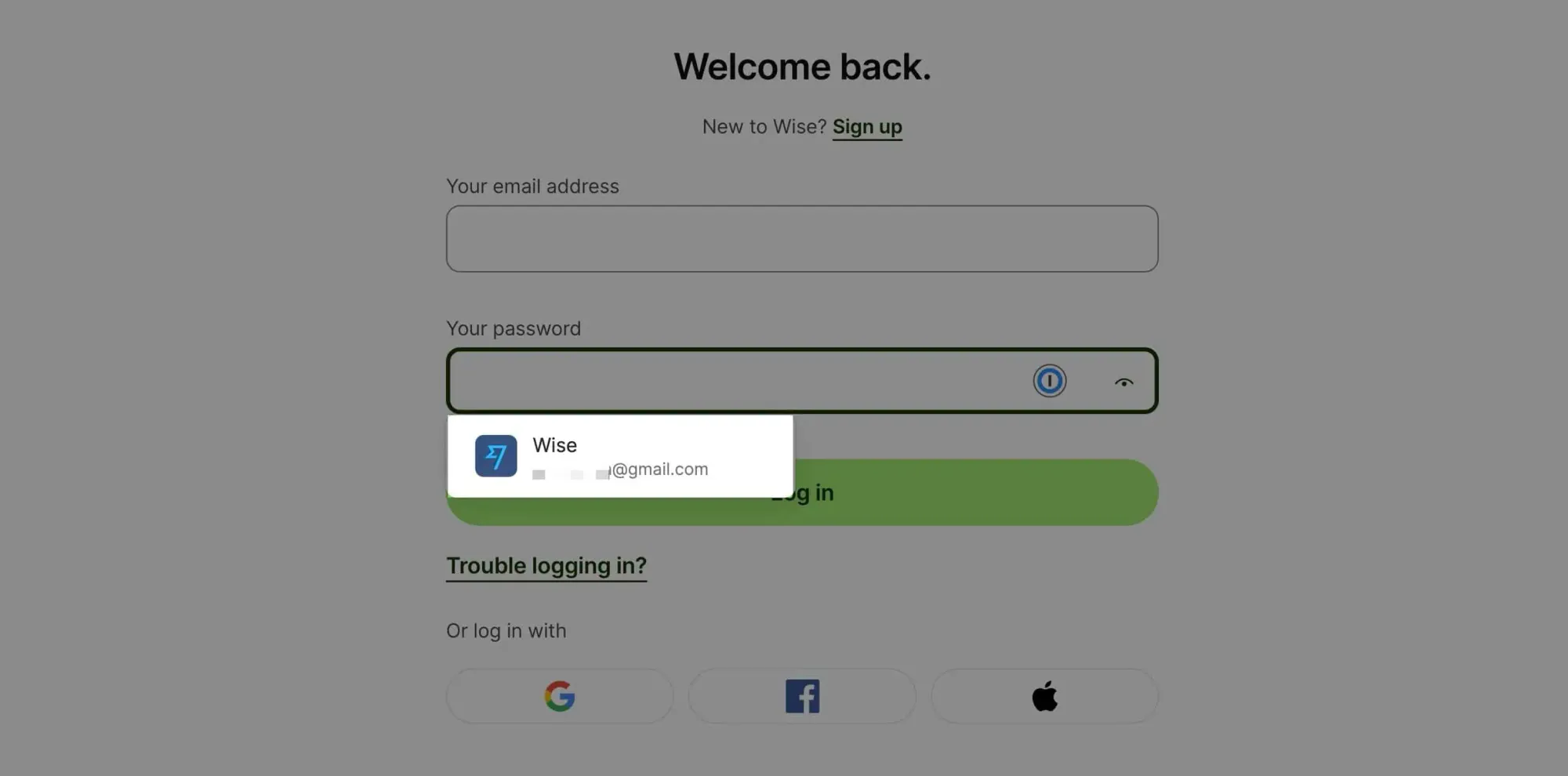
It also syncs with the 1Password app on your computer, which is very convenient. This means if the app is unlocked, the extension will be unlocked too, allowing you to fill in passwords without extra steps.
I believe this feature was introduced with 1Password 8 (which is the latest version as of writing), but I could be wrong.
2. AdGuard AdBlocker
When I was still using Google Chrome, AdGuard was my #1 extension for blocking ads. I hadn’t tried a whole lot of other extensions, but among the ones I did, AdGuard was the best.
It’s even better today, with many more features added to the mix. And it’s still free, well, with limited features, of course.
But ever since I switched over to the Brave browser a few years ago, I stopped using this extension because ad-blocking is built right into Brave. I’d say though, what Brave can do out of the box is just a fraction of what AdGuard has to offer — even with the free version.
3. GoFullPage
This extension is a solid choice for snapping quick, full-page screenshots with just one click. It's straightforward — no ads, no unnecessary permission, no bullshit.
With the free version, be aware that you might see page breaks if the page is too long. The premium version offers Smart Page Breaks, although I haven’t tested how well that feature performs.
For high-quality, continuous full-page screenshots, I always use CleanShot free extension. It's a premium Mac app that's not free, but it’s been an invaluable tool in my arsenal for screenshotting and screen recording for years now.
4. Image Size Info
This extension allows you to quickly right-click an image and view information like file URL, file resolution, and file size of that image:
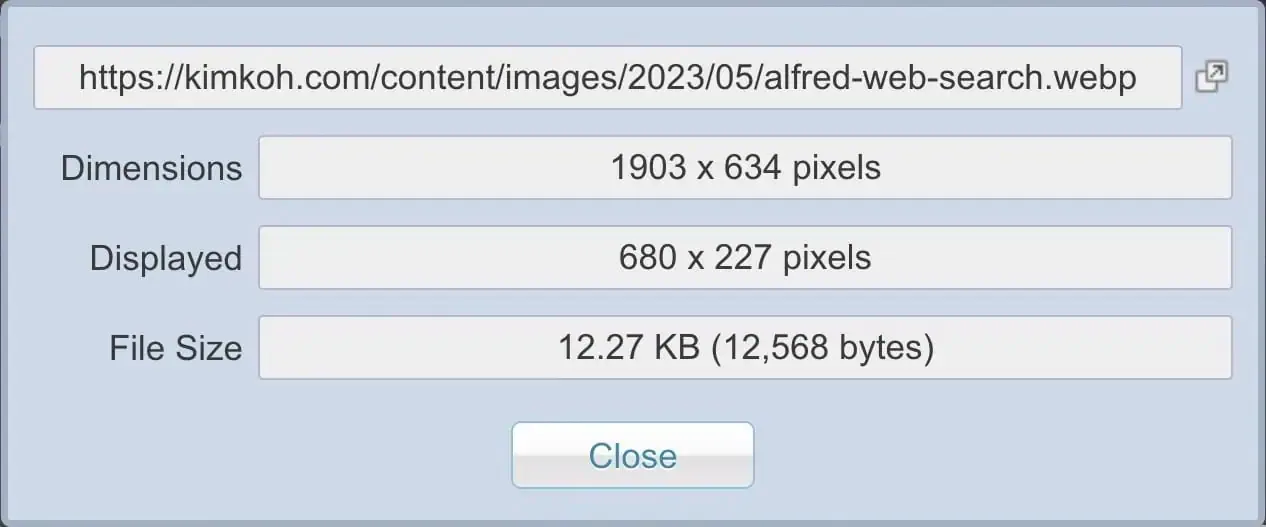
5. Readwise + Readwise Highlighter + Readwise Exporter
These are three different extensions by Readwise but I've grouped them all together because they're designed for different yet closely related purposes.
Depending on what you need, you might not require all three, but here’s a breakdown of what each does:
Readwise
This extension connects your Readwise account to your Kindle account, syncing your Kindle highlights automatically.
Whenever you highlight something in Kindle:

It appears in your Readwise account like magic:

The best part?
As long as this extension is active in your browser, any new highlights sync automatically and in the order you made them — well, with about 95% accuracy.
Sometimes the order might be slightly off, but from my experience, it’s usually pretty close.
Readwise Highlighter
This handy extension mainly does two things:
1. Highlight Saving
You can highlight text on any webpage, right-click, and you'll see an option to save it directly to your Readwise account.
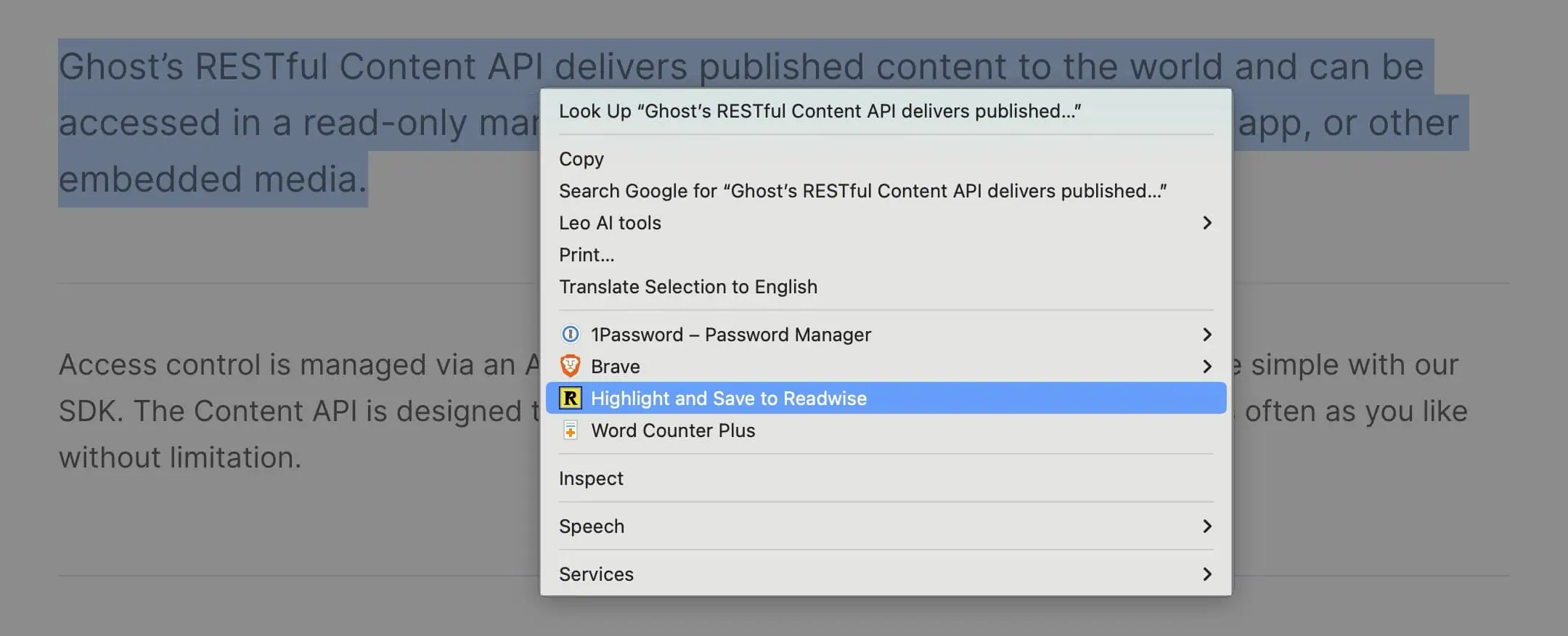
2. Save to Reader
If you’re reading an article you want to keep, just click the extension icon. A Reader bar will pop up above the article, letting you add it directly to your Reader library.
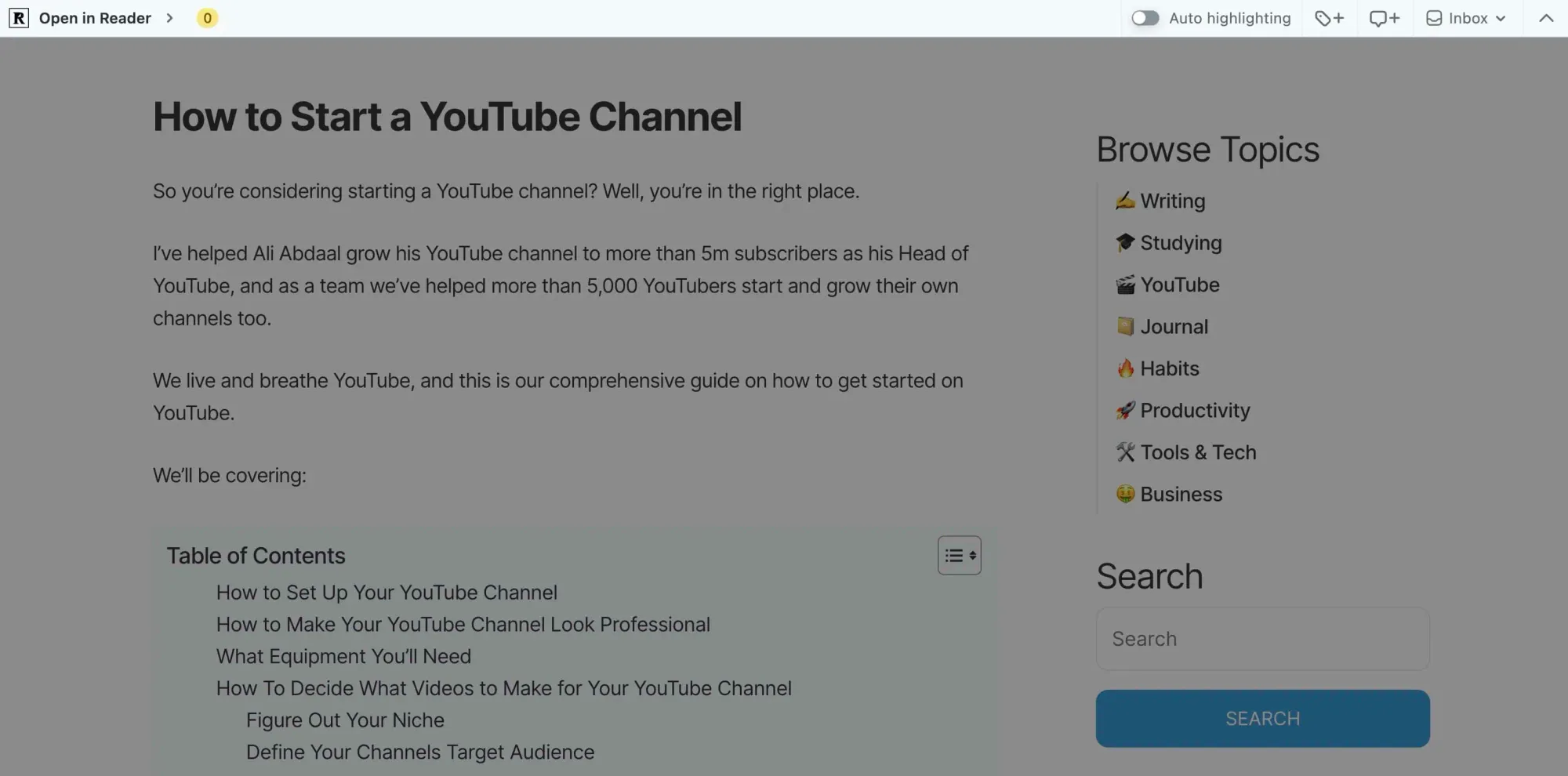
The article then shows up in your Reader library, ready when you are:

Readwise Exporter
Once you've gathered all your highlights, this extension lets you sync them to your favorite note-taking app.
It's optional, but if you're like me and prefer everything in one place, it’s a game changer.
For instance, I sync my highlights to my Notion account:

6. Word Counter Plus
This free extension lets you quickly check the word count within your browser.
Just select the text you're interested in, right-click, and choose “Word Counter Plus.” It will immediately show you both the word count and the character count.

I find myself using this extension quite often — it's a real time-saver when I need to quickly check the word count of any text.
Best Chrome Extensions for Productivity / Work
7. Change Case
This handy little extension makes it super easy to transform your selected text into uppercase, lowercase, title case, sentence case, and more — all with just one click.
I've set up some keyboard shortcuts, so whenever I need to switch text case types, I can do it instantly with a single keystroke:
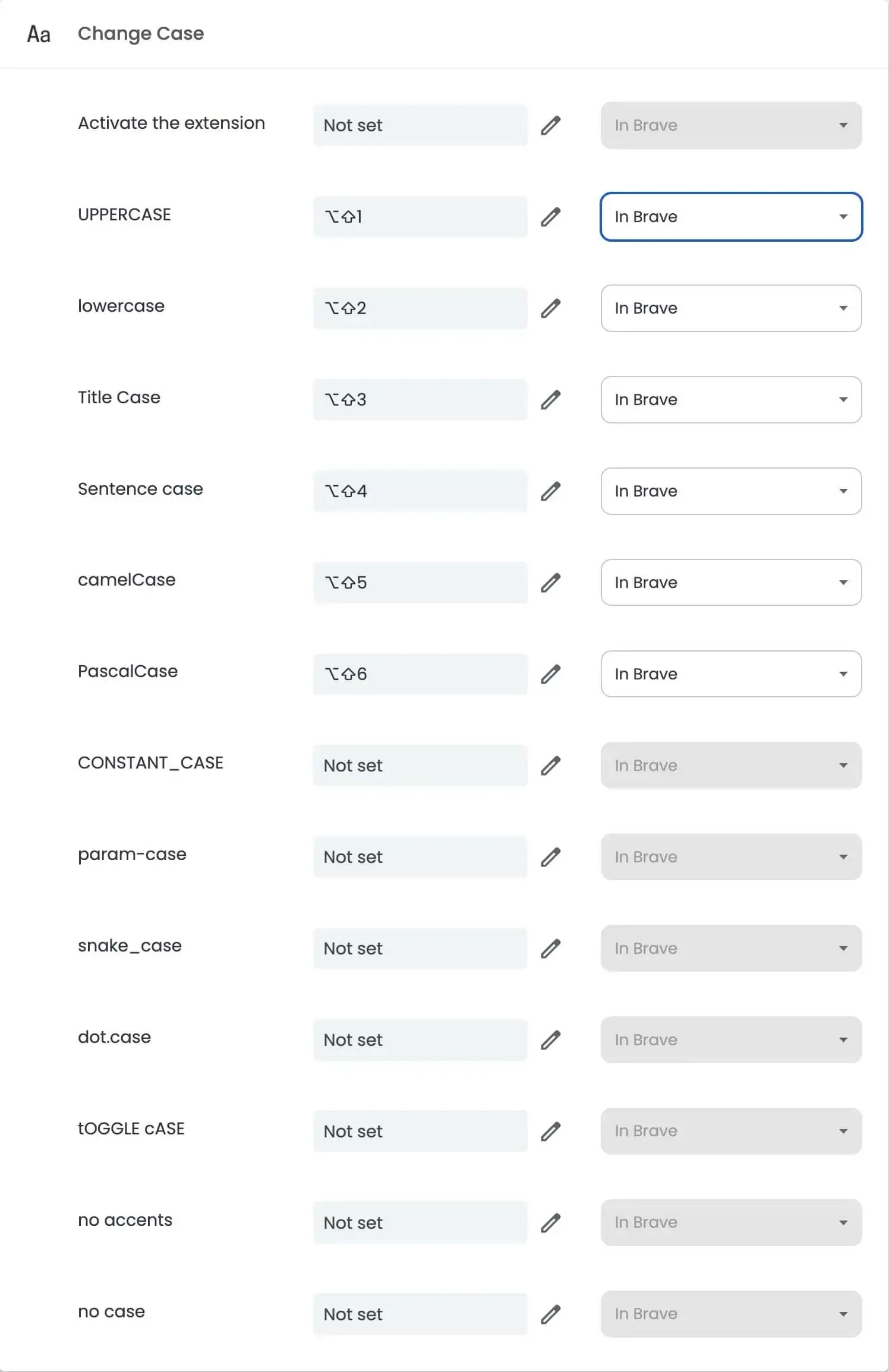
8. Grammarly
Well, this one shouldn’t need an introduction, right? It's a great tool for making sure your writing is clear and correct. But it's not perfect.
Sometimes, it feels a bit too strict, like it's pushing your writing to be perfect, and that can make it lose some of its charm.
Like… do you really have to sound more confident all the freaking time? 🤨

In most cases, you might notice that if you follow all its advice, your text starts to sound a bit robotic.
I think it's important to find a good balance — use its suggestions to fix mistakes but keep your writing sounding like you, the human.
The free version catches the easy mistakes, but it always seems to hint at bigger issues and then asks you to pay to see what they are — which is pretty useless to me.
So, if you really want to dig deep with Grammarly, you'll probably have to go for the premium version.
9. Instant Data Scraper
This extension is a lifesaver when you need to grab data from web pages. It pulls data from tables and lists on websites and organizes it into a structured format, like a spreadsheet.
Say I search for “NFT books” on Amazon and want to compile a list with details like the book's name, the author's name, price, rating, and a link to each book.
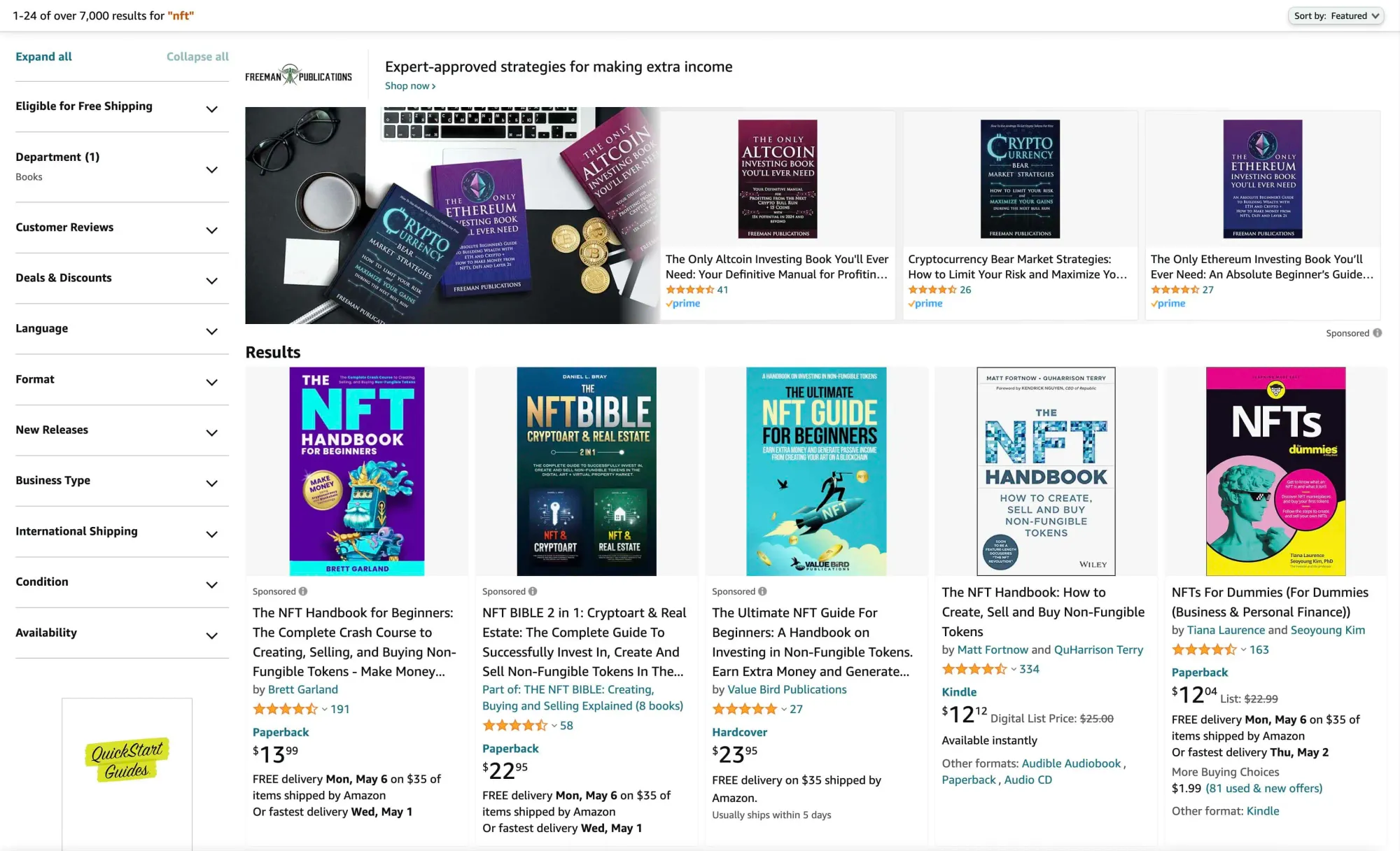
After firing up the extension, it scrapes the data and displays it in a popup window:
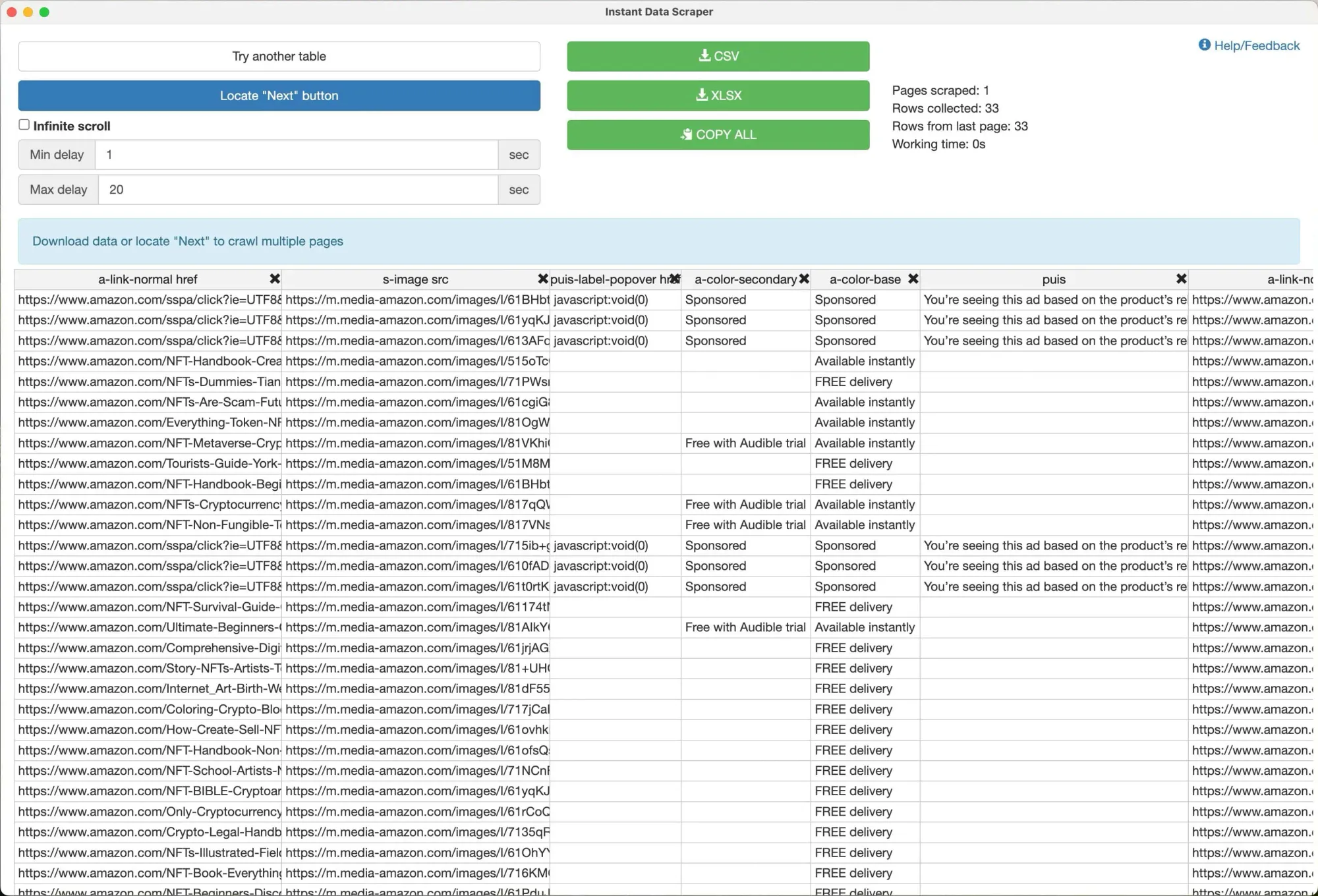
I then remove all the unnecessary columns to keep it clean:
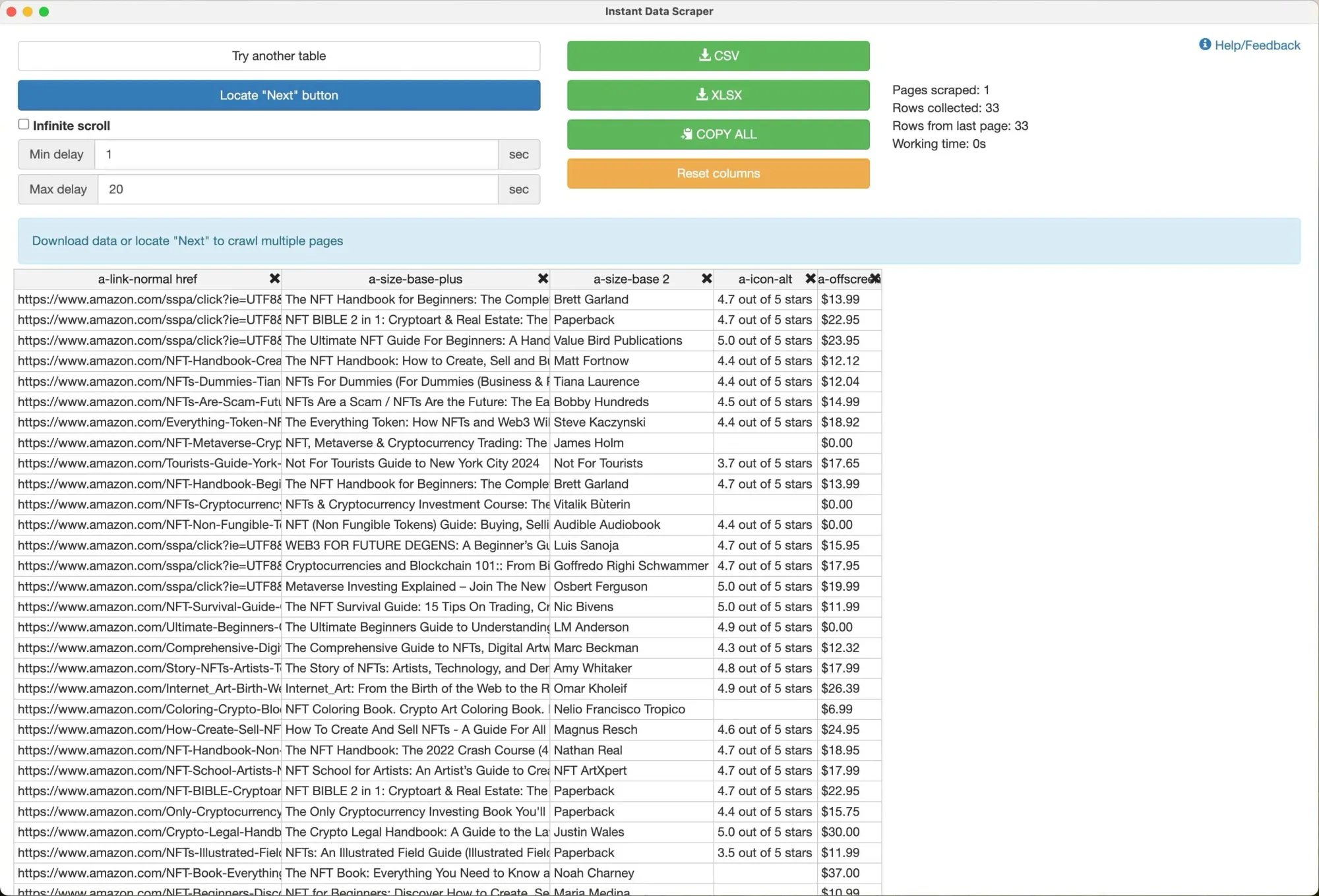
And after pasting the cleaned-up data into Google Sheets and tidying it up a bit, it looks like this:
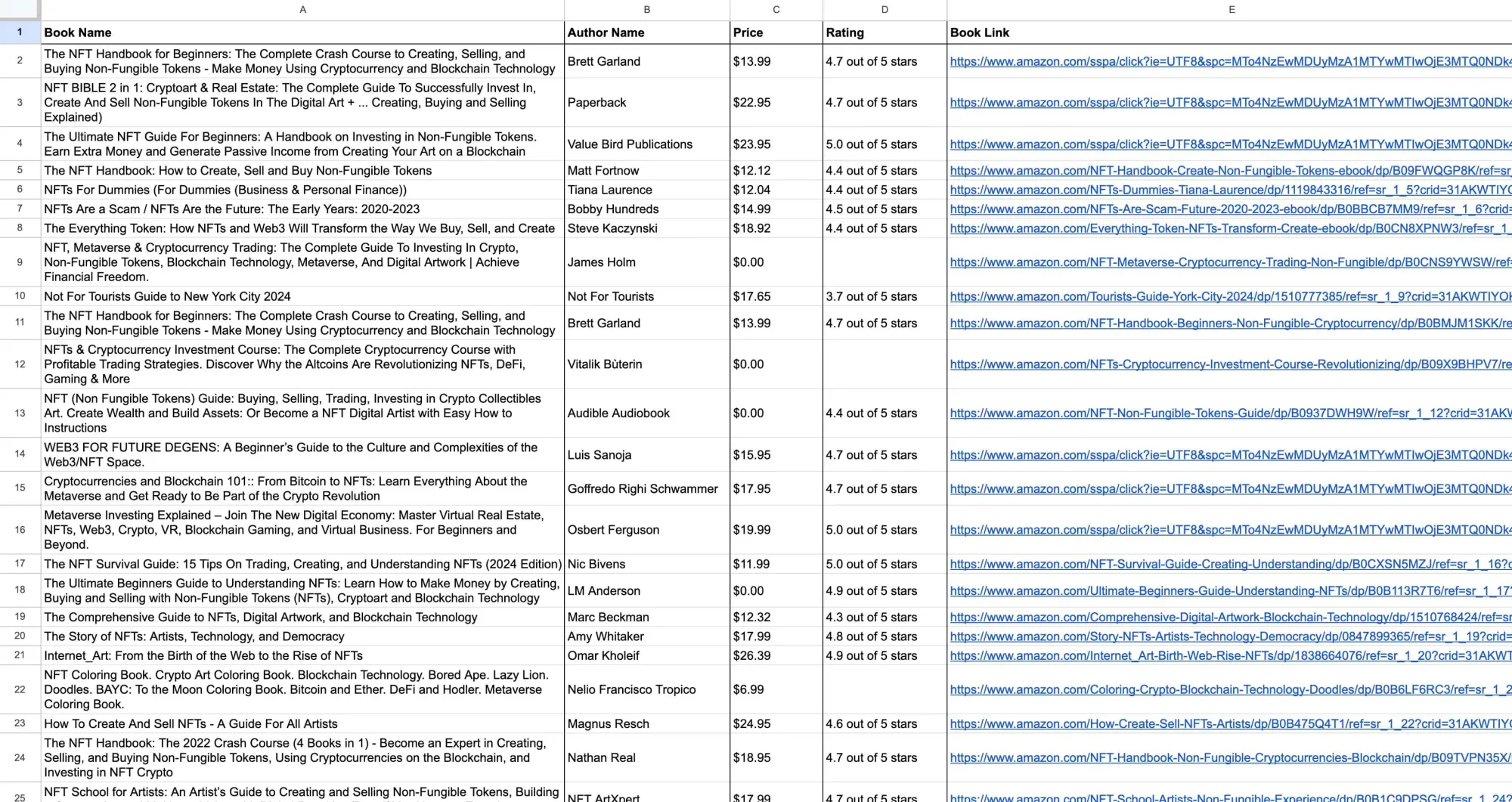
Definitely a neat tool for when you need to scrape and organize a large amount of data onto a spreadsheet quickly.
10. StayFocusd
StayFocusd is a nifty browser extension that helps you stay on track with your work by limiting the time you can spend on distracting websites.
You can manage your distractions by adding sites to the Blocked Sites list to block them, or by using the Allowed Sites list to block all sites except those you've chosen to keep.
Once you've used up your allotted time on these sites, StayFocusd shuts them down, helping you keep focused for the rest of the day.
On the dashboard, it gives you a rundown of what sites you’ve visited and how long you spent on each, kind of like the Screen Time feature on your phone, which is pretty cool.
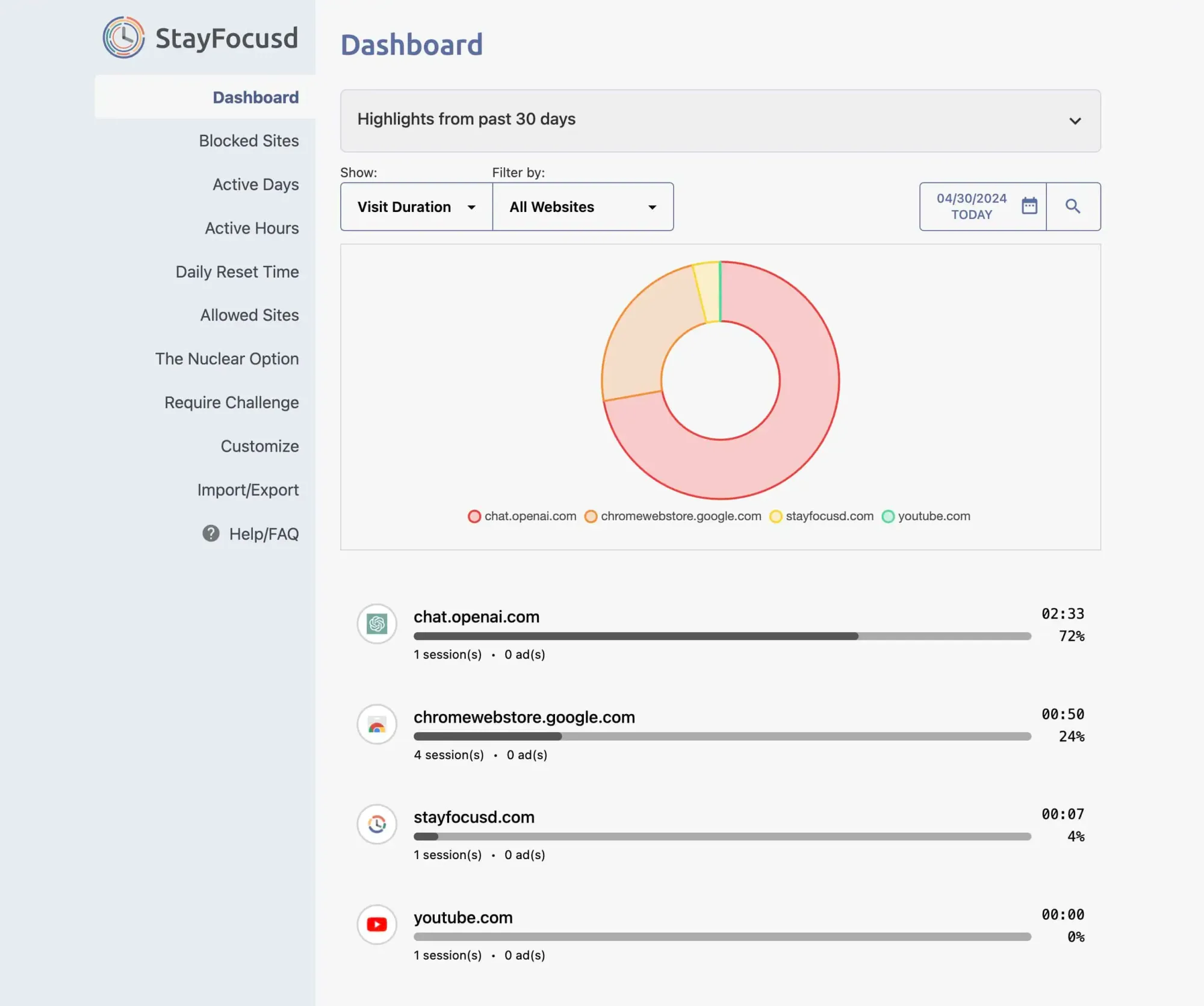
One feature I really like is The Nuclear Option, which lets you block sites for a set number of hours on specific days — once you set it, there's no turning back, no matter what your Active Hours are.
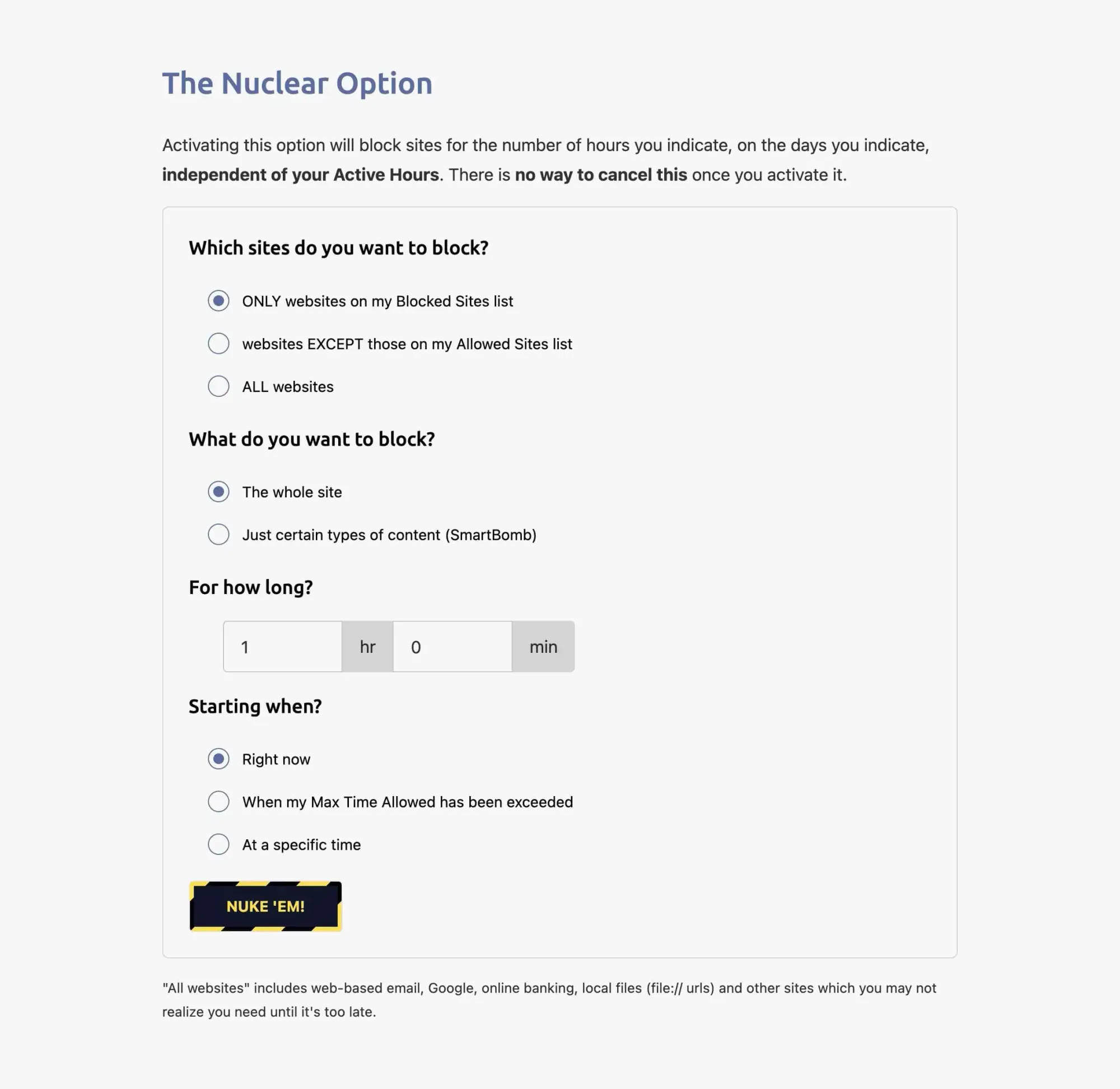
Then there’s Require Challenge, which makes it tough to change settings if you second-guess your restrictions. You'll have to type a 425-character Challenge Text without any mistakes.

One typo, one backspace, and you have to start over. And no, you can’t cheat by copy-pasting.
How well will it work?
That depends on your discipline. Technically, you could just remove the extension from your browser, and all your settings would be lost when you reinstall it — starting you from scratch.
For me, knowing there’s a quick way to disable the extension means it’s not as effective. But it might be different for you.
Best Chrome Extensions for SEO / Marketing
11. Adswerve
Adswerve is a powerful Chrome extension designed for marketers and web developers who need a robust tool for debugging and enhancing data tracking on websites.
This extension has a lot to offer, but there are two features I find especially useful:
Data Layer Interaction
Being able to push events to the dataLayer is incredibly helpful during the initial stages of setting up tracking tags in Google Tag Manager (GTM).
This feature allows me to manually simulate visitor interactions on the site, testing and confirming that all tracking is firing correctly before anything goes live.
Even when I’m not actively pushing anything to the dataLayer, just having the extension enabled allows me to see all the events being pushed to the dataLayer in the developer console.
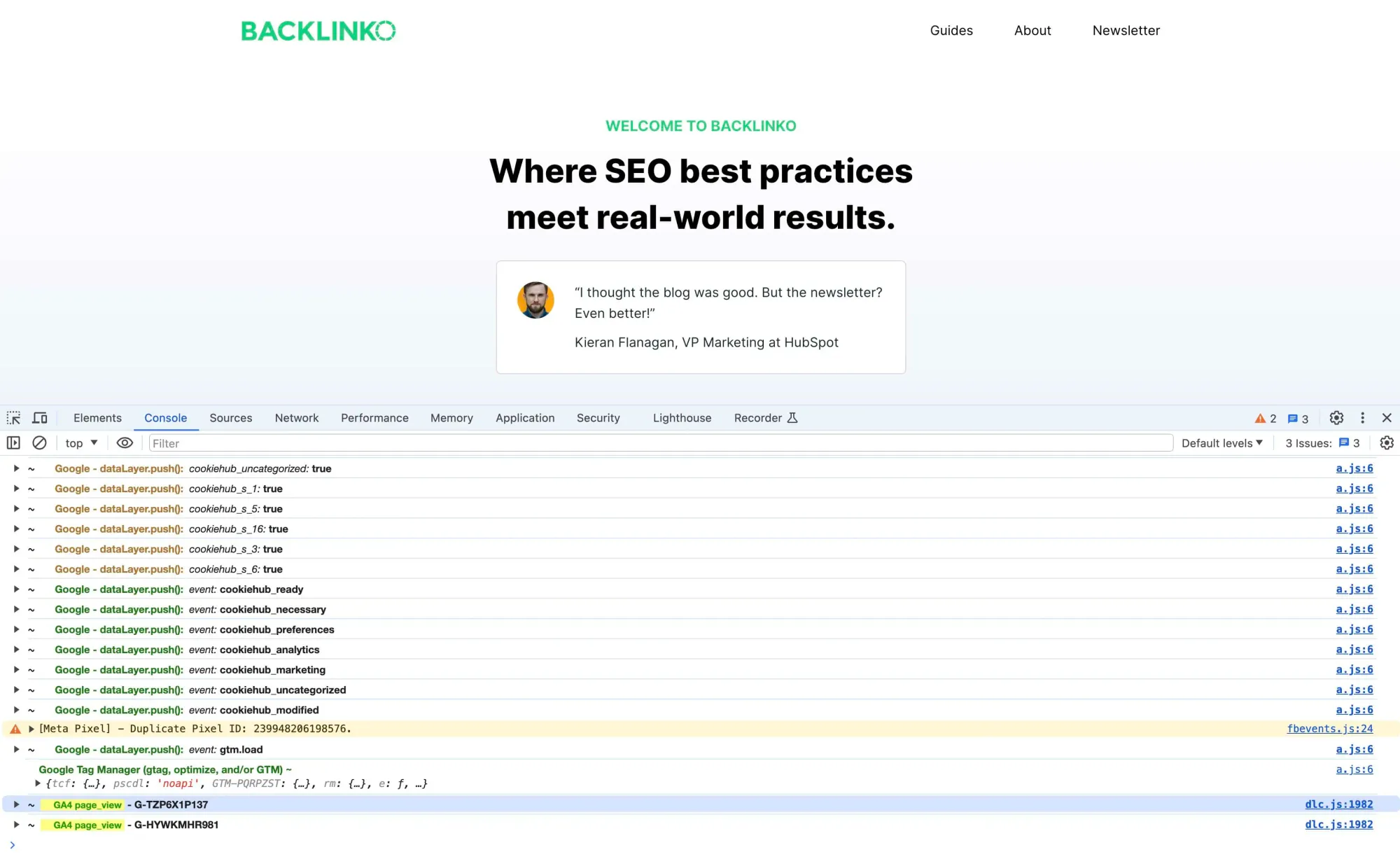
It’s like having a behind-the-scenes look at how data moves, ensuring everything is set up perfectly.
GTM Container Injection
The ability to inject GTM containers locally has been a game-changer for me too.
It allows me to experiment with different tracking setups on my test sites without risking any changes to the live site’s data.
It’s essentially like having a sandbox where I can tweak and adjust configurations until everything is just right.
While the extension boasts many more advanced features, these are the ones I rely on the most.
They are crucial for managing the GTM tags on this very website, helping ensure that my conversion tracking is as reliable and insightful as possible.
12. Ahrefs SEO Toolbar
This is easily one of my favorite extensions on this list, hands down.
For starters, if you think Domain Rating (DR) is a legit metric, this extension shows you the DR right on the icon for any site you visit — no need to click anything.

However, clicking on the extension opens up the SEO toolbar, which offers even more data about the site.
Here's a look at 3 features I find super useful, though you can check out the official documentation for a deeper dive:
1. Metrics
This tab is great for quickly checking SEO metrics of a page or the entire site. Just remember, like all SEO tools, Ahrefs estimates search traffic based on keyword rankings and industry CTR, so take these metrics with a grain of salt.
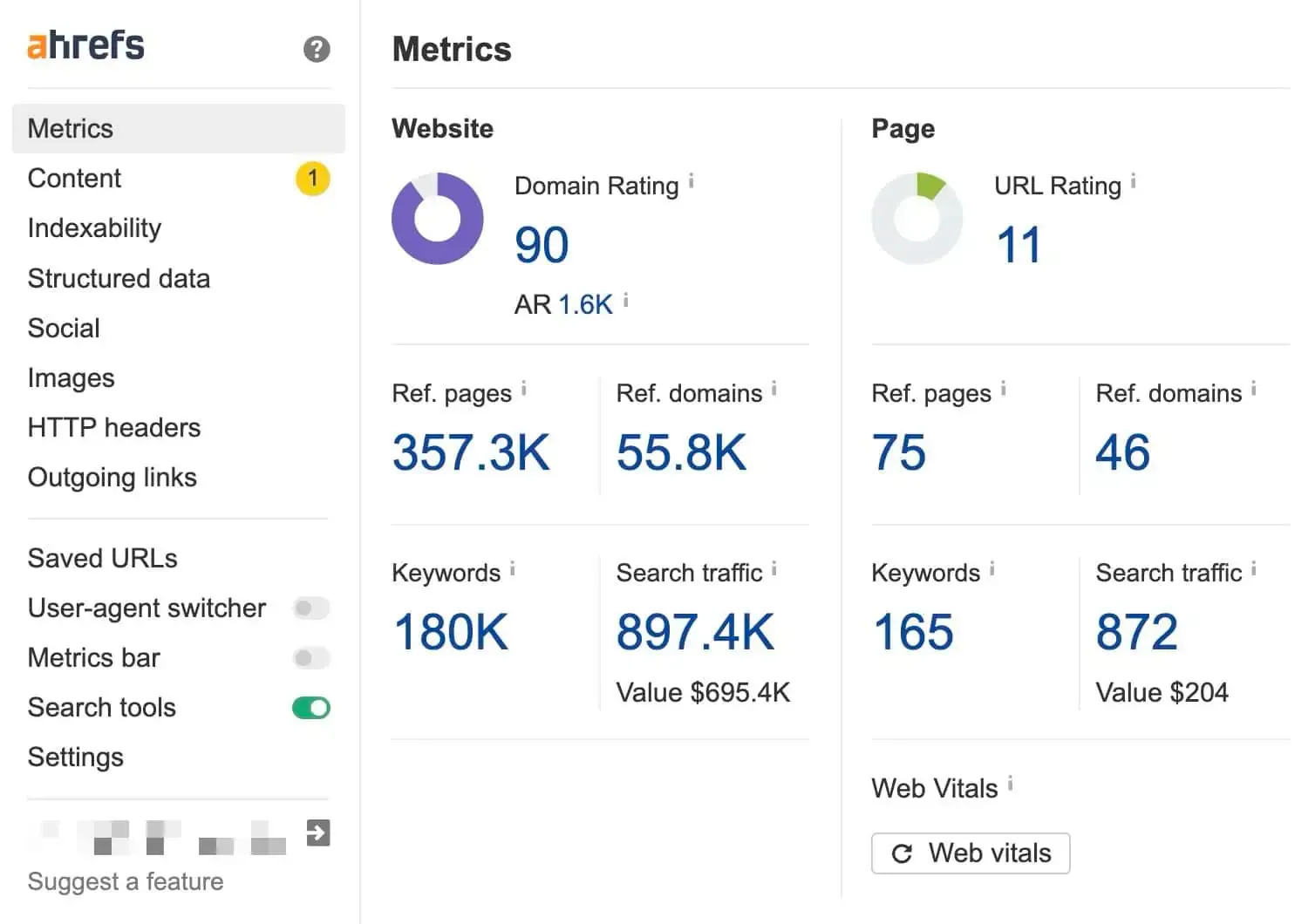
2. Content
This tab reveals the metadata, publishing date, word count, and content structure of the page — handy for sizing up content quickly.

3. Outgoing Links
Perfect for competitor research, this tab shows all the outgoing links from the page, letting you see where your competitors are getting links from.
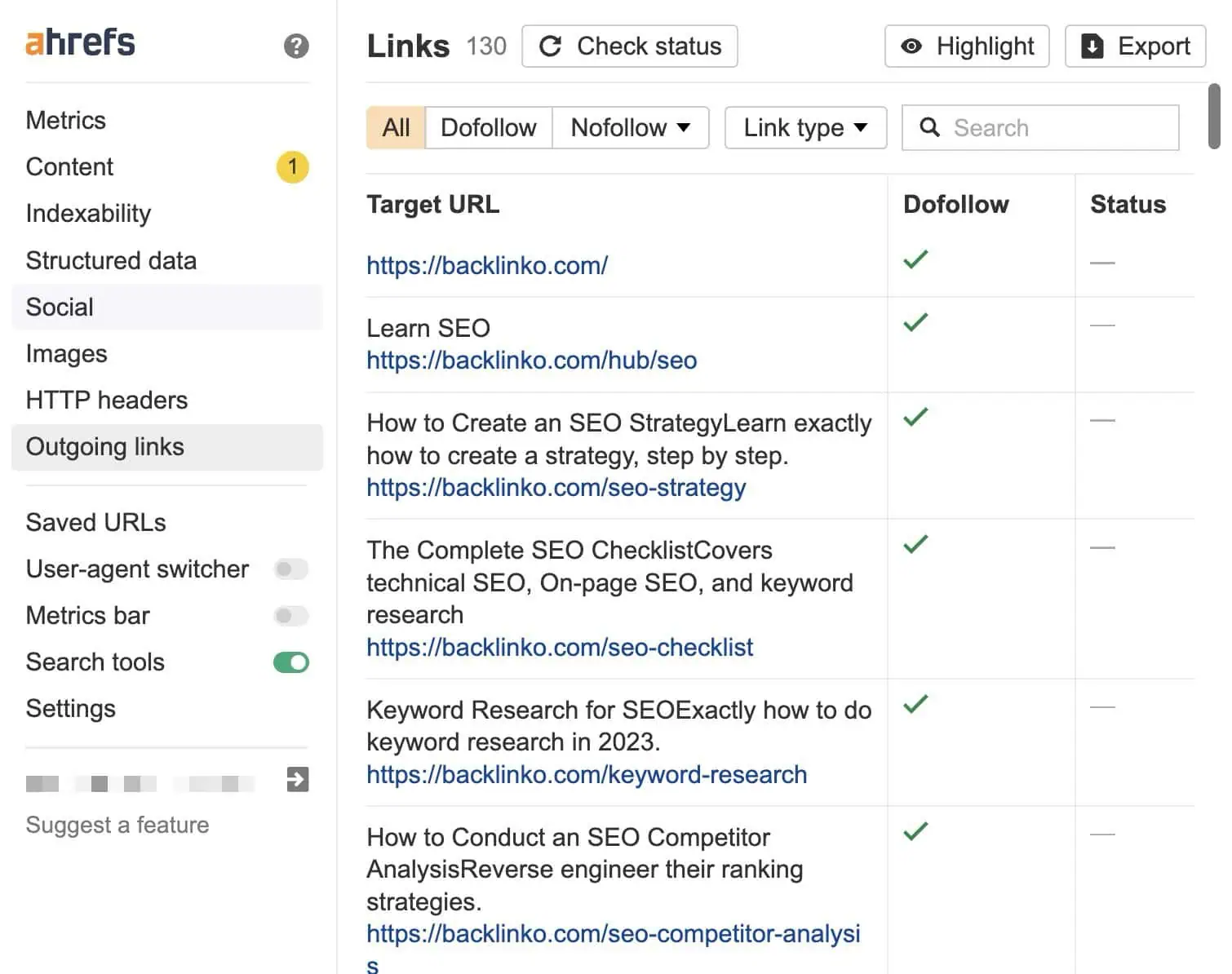
There's also a Metrics Bar that displays SEO metrics in a sticky bar above the page content.

And you can toggle it on within the SEO toolbar:

Now, the real kicker with this extension?
You can search for a keyword and see the SEO metrics right under the Google search bar without using up your Ahrefs credits…
…well, sorta.
When you search for a keyword on Google, the keyword metrics shown under the search bar costs 1 row from your Export rows per month account limits:

You can check how many export rows you have left for the month in Account Settings:
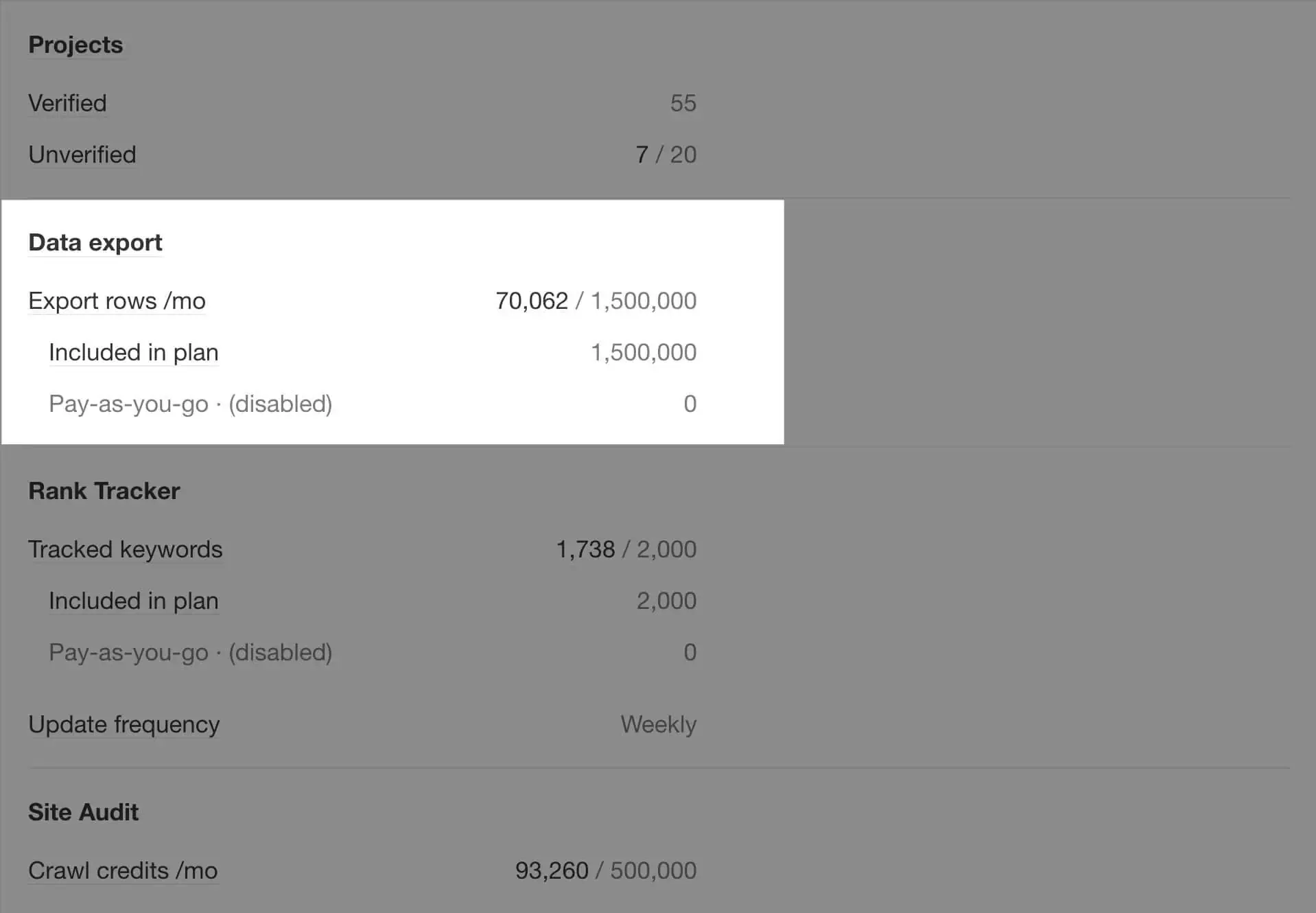
I’m on the Standard plan, which gives me 1.5M export rows per month — way more than enough for my needs. If you’re on the Lite plan, you get 500K, which is still plenty.
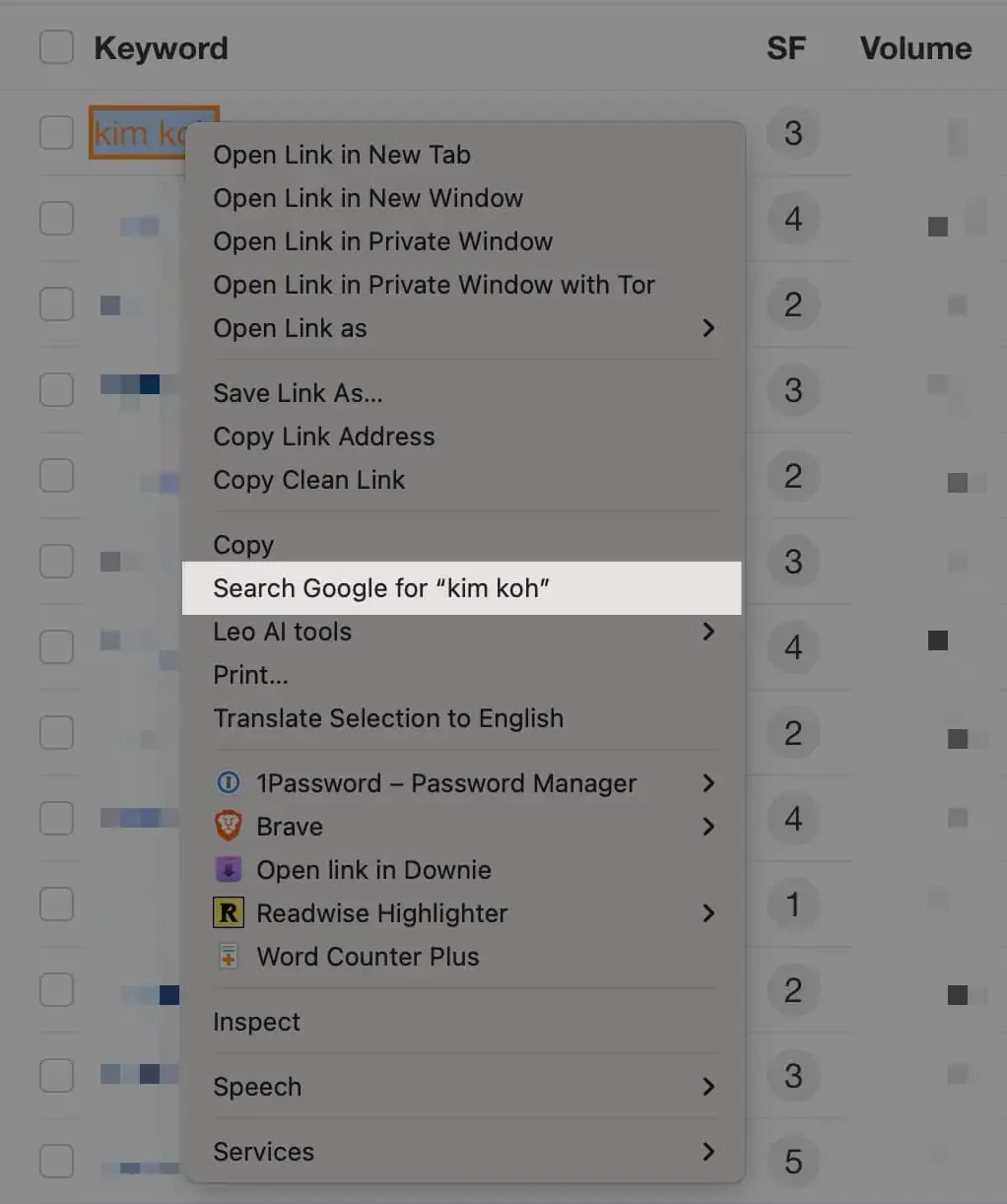
13. AltText.ai
This handy tool uses AI to automatically generate alt text for images on your site, making your content more accessible and SEO-friendly.
Just right-click on any image and select "AltText.ai: Get alt text":

In just a few seconds, it’ll whip up a descriptive alt text for the image:

I’m not gonna lie, the description it creates, especially for a graph, is pretty impressive.
If you’re using Ghost to host your site, it's important to note that AltText.ai won't work directly in the Ghost editor. You’ll need to preview your post to see the ”AltText.ai: Get alt text” option in the right-click menu.
I snagged this tool on a lifetime deal from AppSumo for just $29, which gives me 150 credits per month — more than enough for what I need.
The deal's not currently open, but you can throw your email on their list to get notified when it’s available again.
Best Chrome Extensions for Finding Emails
I’ve grouped together various extensions I use for finding emails because there isn't a single best tool for the job.
To ensure I'm getting the correct information or even just to locate an email, I often find myself switching between different tools.
14. Clearbit Connect
Clearbit Connect is a fantastic extension for quickly finding email addresses. To get started, simply open your Gmail with the extension active.
You’ll notice the Clearbit icon on the sidebar:
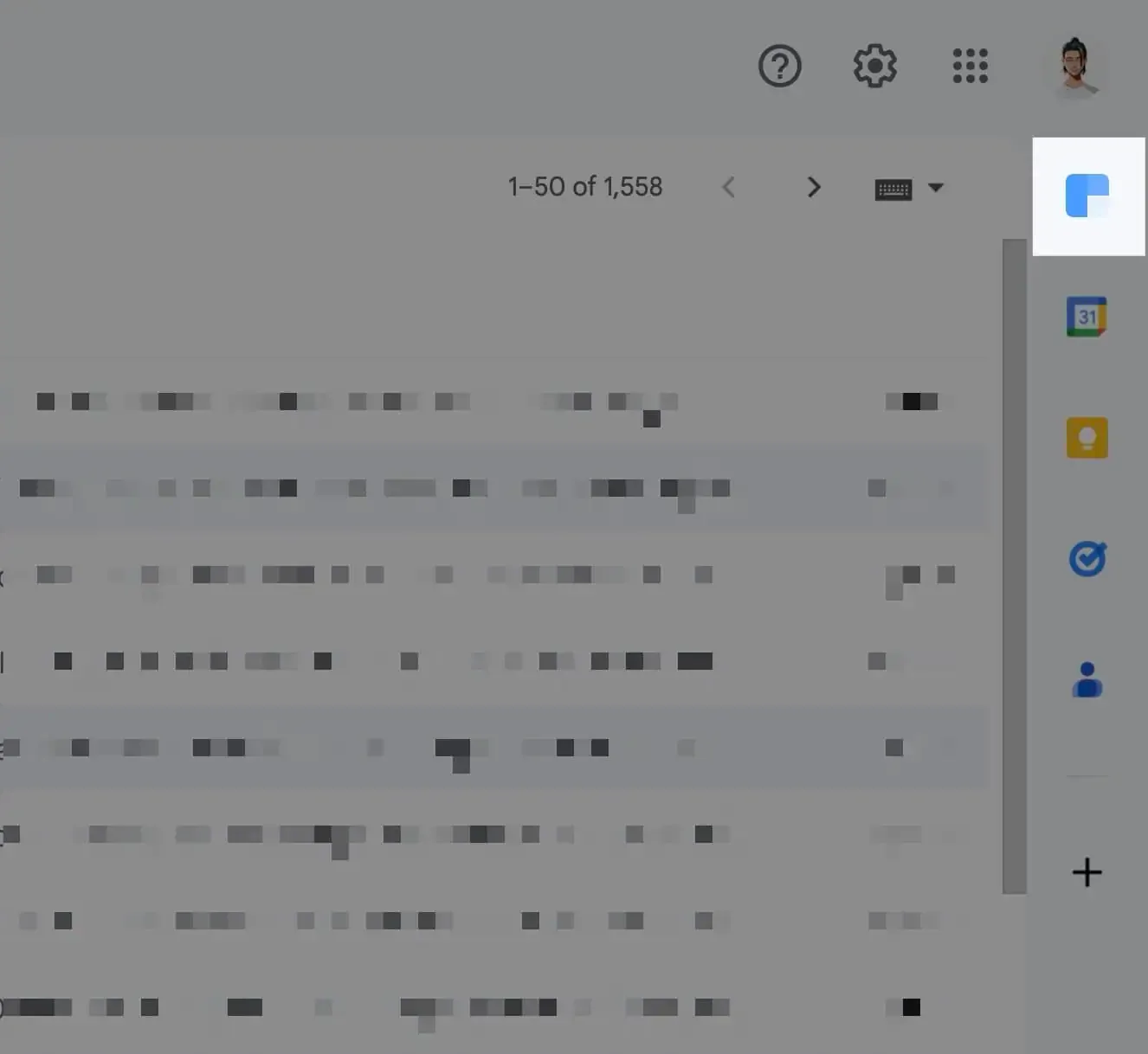
Click on it, and you'll see an option to Find email addresses:

Type in the company name:
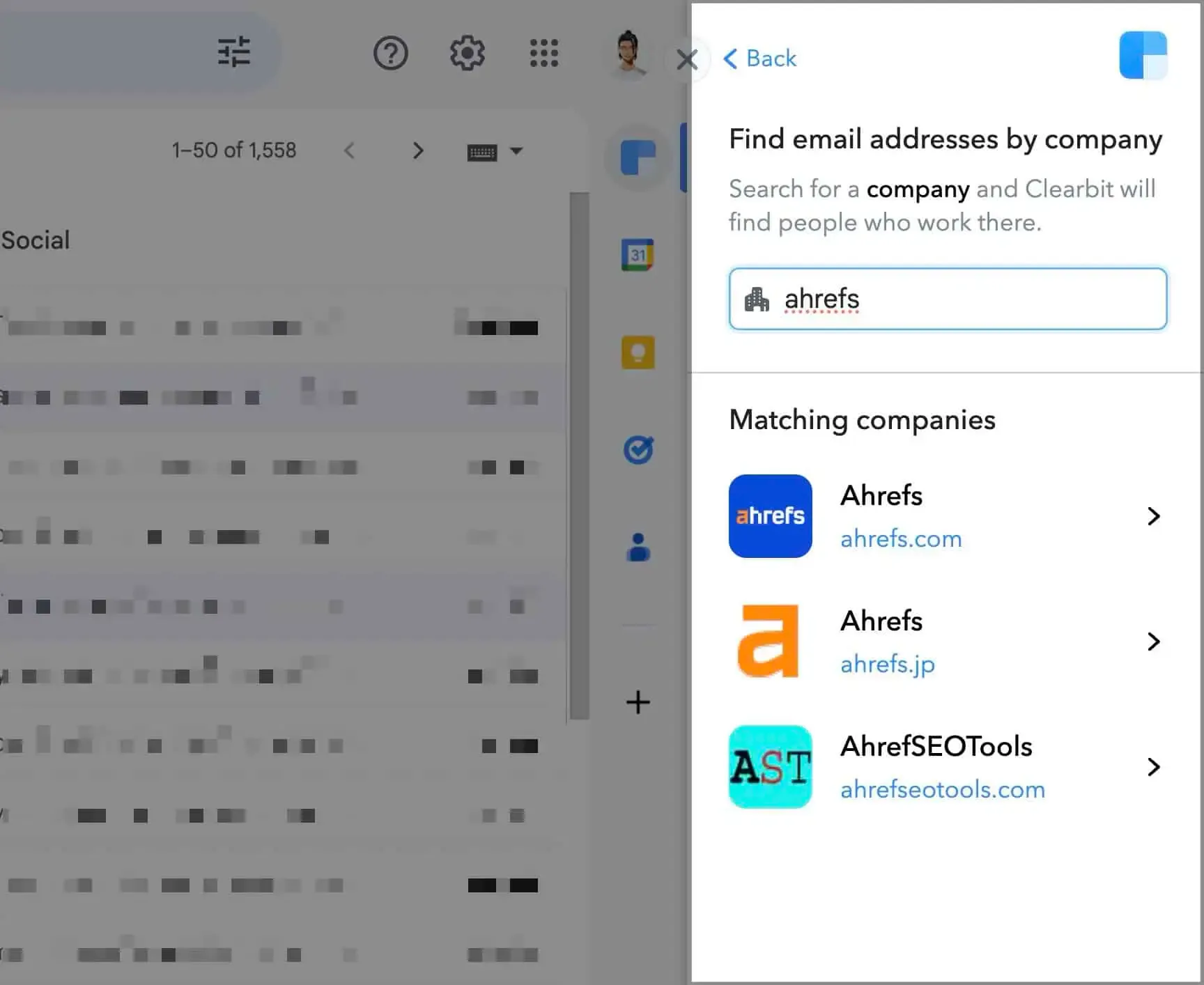
You’ll then see a list of employees. Choose the person whose email you need:
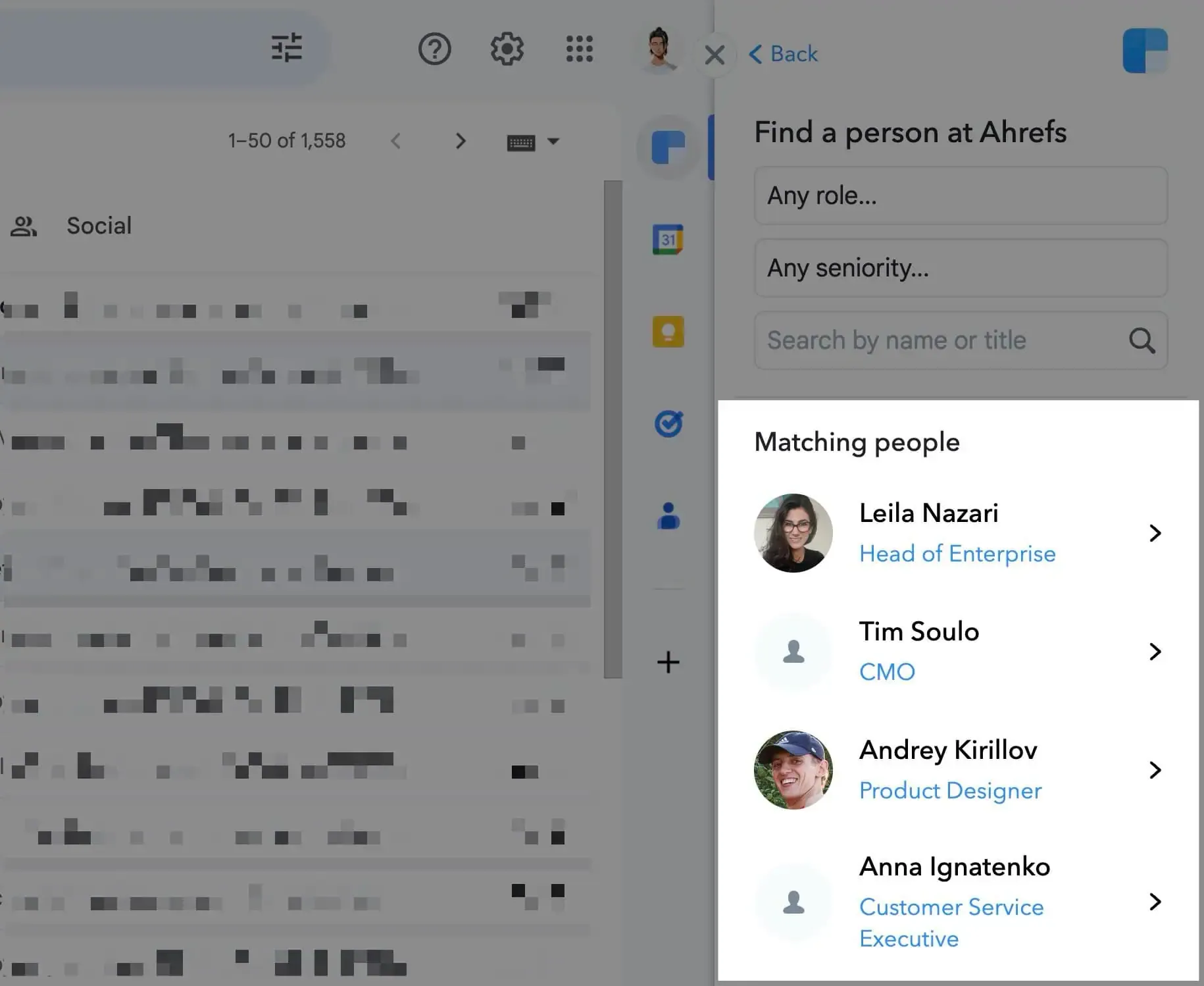
And voilà, you can copy their email directly:

But that’s not the only way to use Clearbit Connect. There’s also a handy floating widget for when you're browsing websites.
If you don't see the widget on the right side of the screen, click the extension icon and select “Click/Hide Connect Browser Widget” to toggle it on.

Clicking on the widget will reveal the Company and People tabs. Hit the People tab, browse through the list of employees, select someone, and copy their email:

Whether you’re networking, prospecting, or just doing some research, Clearbit Connect makes it a breeze to gather contact information right from your browser.
15. FindThatLead
FindThatLead is a tool I’ve leaned on in the past to find emails.
They rolled out FindThatLead 2.0 last year, and although I haven’t tested this new version yet, it looks strikingly similar to Clearbit Connect at first glance.
That similarity isn't necessarily a bad thing, though — jumping between similar tools can actually speed up our email finding process.
Now, I’ve gotta say, the website widget has been a bit of a letdown for me. It just doesn’t seem to work, and I can’t tell if it’s just a bug or something off with the design:

However, using the search feature within the account dashboard is another story. It works flawlessly, much like Clearbit’s:
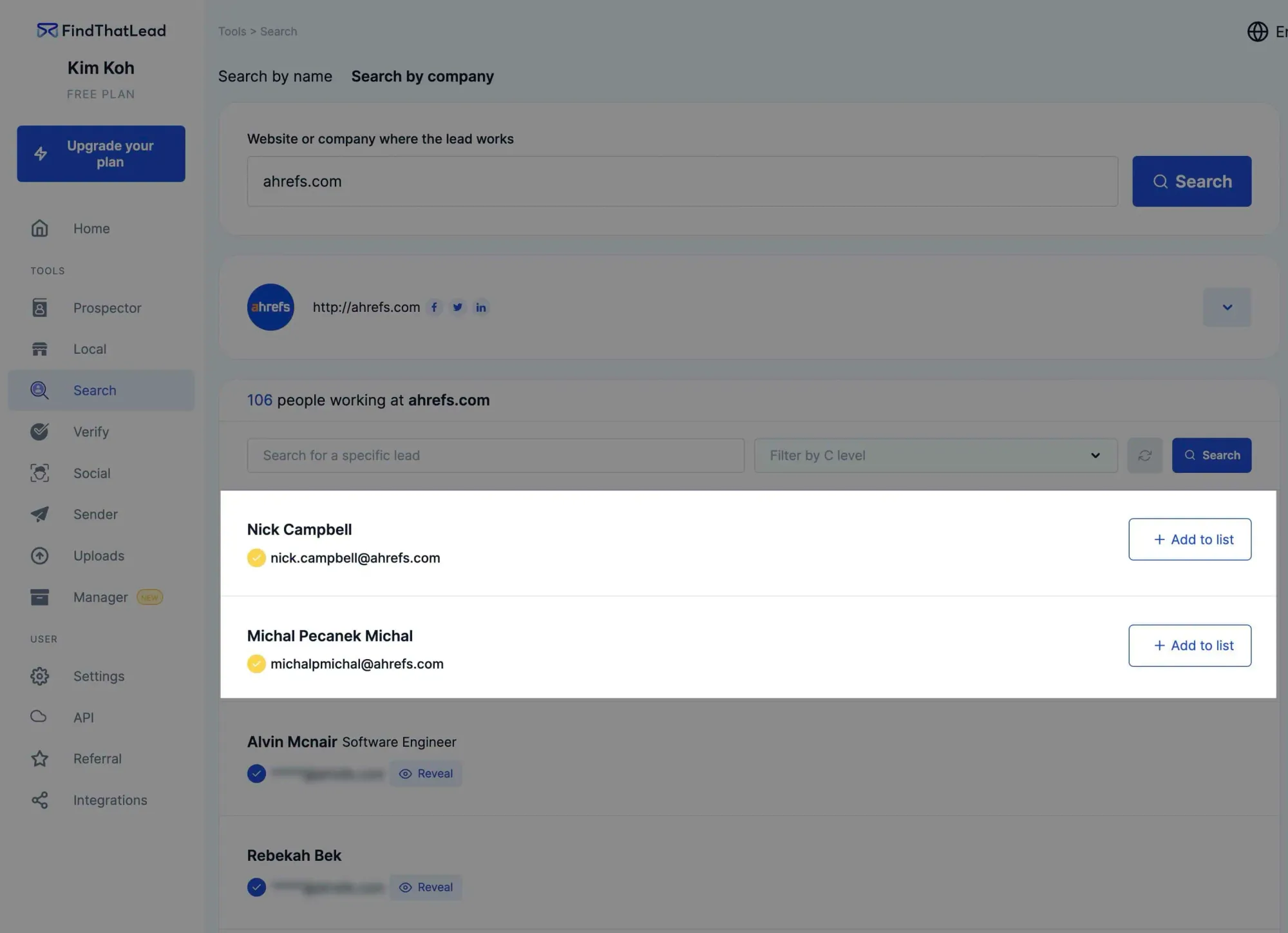
Overall, despite the hiccup with the widget, the dashboard’s search feature is straightforward and effective, making FindThatLead a solid addition to your toolkit for sourcing emails.
16. Hunter
Hunter is a really cool tool I use to find someone's email. It's got a bunch of helpful features, and even the free version lets you do quite a bit.
With the free plan, you can make 25 searches and 50 email checks each month. Plus, you can go back and look at your old searches without it costing extra.
Here are the three features I use the most:
Search
Just type in a website, and Hunter shows you all the emails connected to it.
The best part?
You use only one credit to see a whole bunch of emails 🤩

Every email has a little score that shows how likely it is to be right. If it's green, you're (probably) good to go:
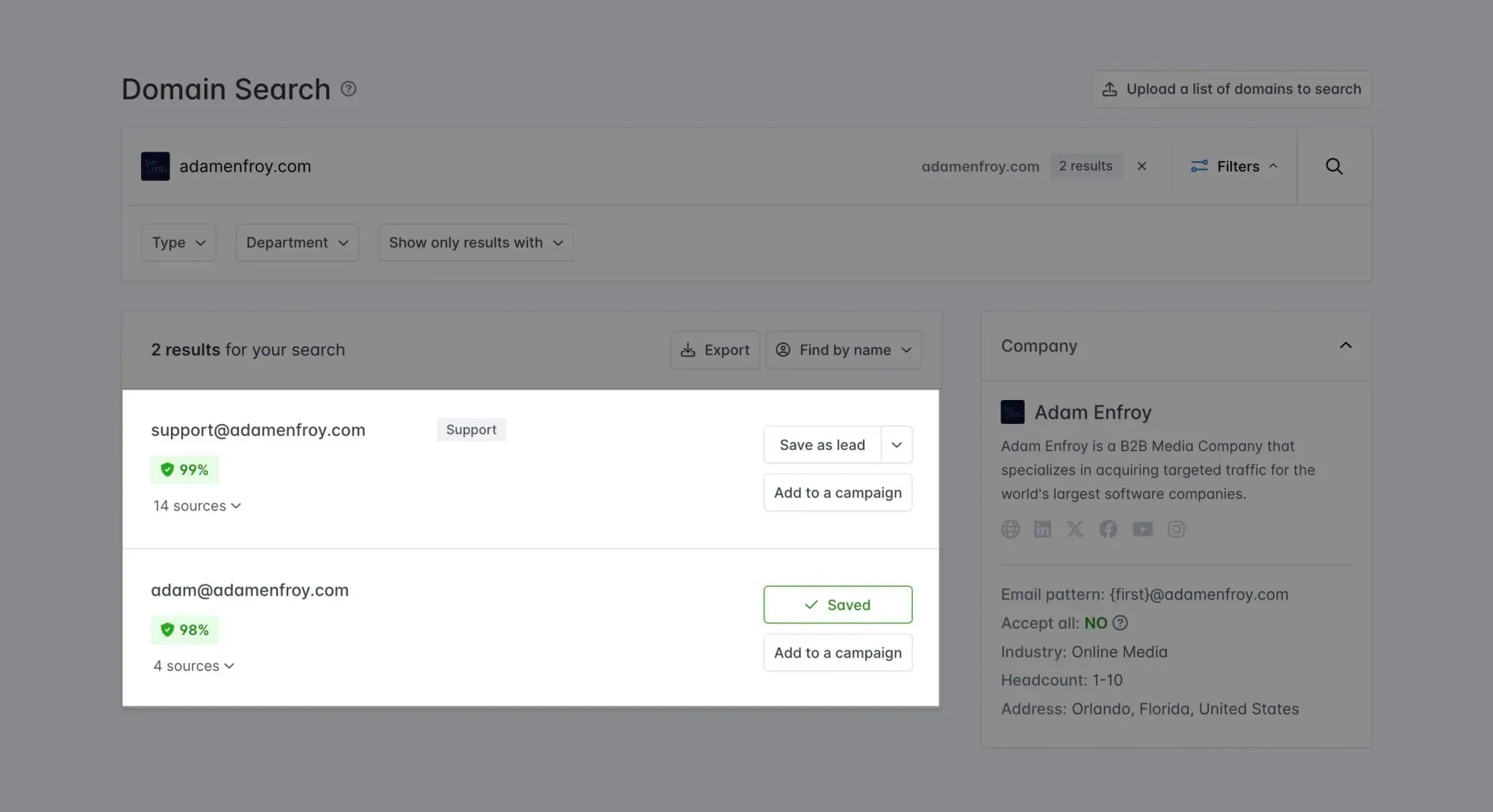
And if it's yellow, it's a heads-up that it’s an accept-all or catch-all email:

Finder
Finder lets you find a specific person with their first name and their company domain:

Verifier
Not sure if an email is real? Type it into Hunter, and it'll check it for you.
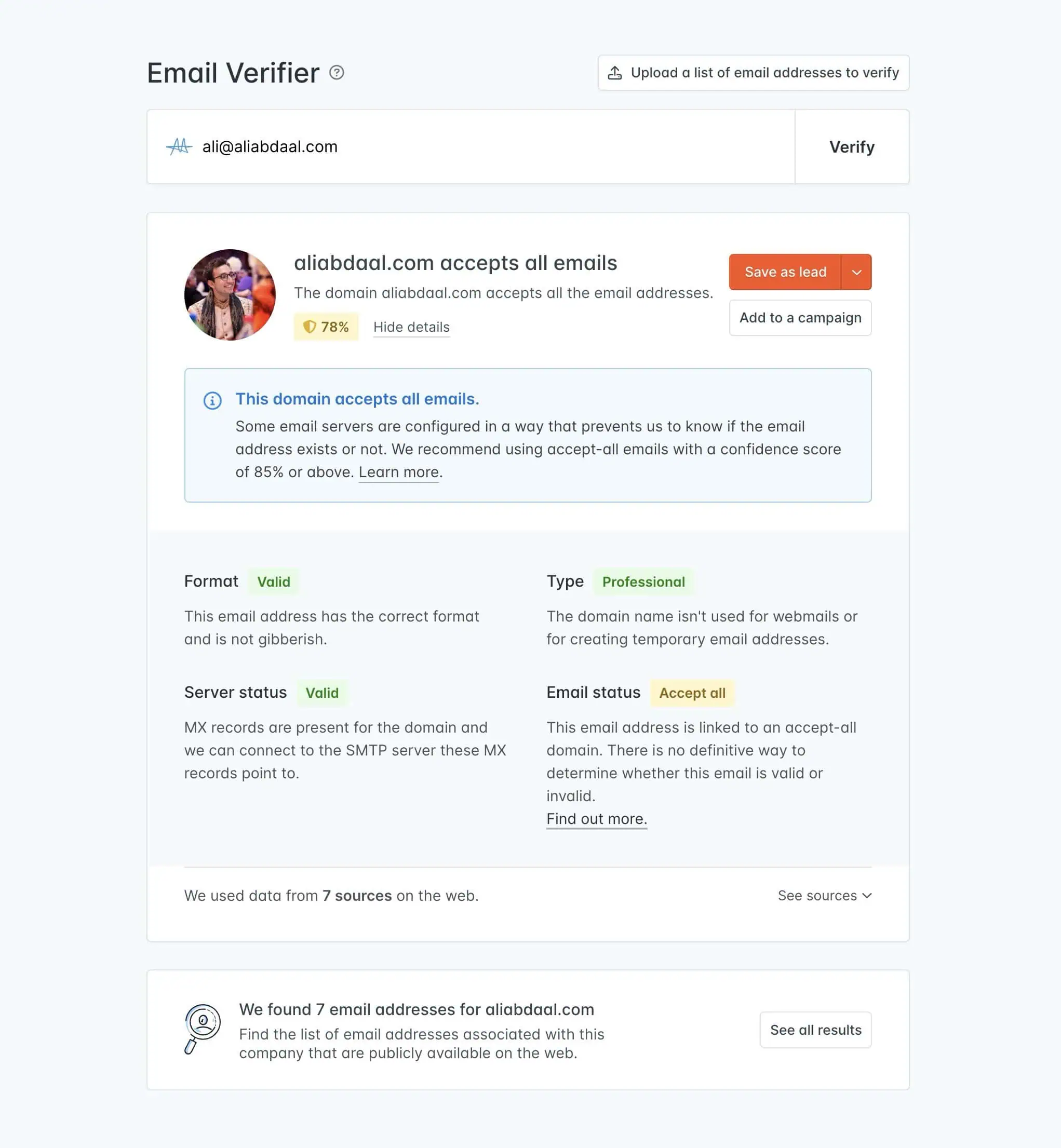
Overall, Hunter is one of my favorites for sourcing emails. The UI is just so intuitive and easy to get around, and you learn a lot from just one search, which actually makes the free plan pretty practical.
About the confidence scores — they can be hit or miss sometimes. That's exactly why I always double-check emails with other tools too.
17. Name2Email
Name2Email is a handy extension that helps you verify someone's email right within Gmail's editor, assuming they're using Google Workspace for their business email.
Just type the person’s full name followed by their domain like this:
firstName lastName @company.com
It’ll then look for and show you any matching emails:

18. Snov.io Email Finder
Another extension I use to find emails — though I've got to say, it's my least favorite because the interface is less intuitive and the results aren’t very reliable.
Of all the features it offers, there are two that I really use:
Email Search
This feature is pretty solid for looking up individual emails.
Just plug in the first name, last name, and the company domain, and it’ll show you what it finds, with a colored dot indicating the status:

Hover over the email, and you’ll get more insights:
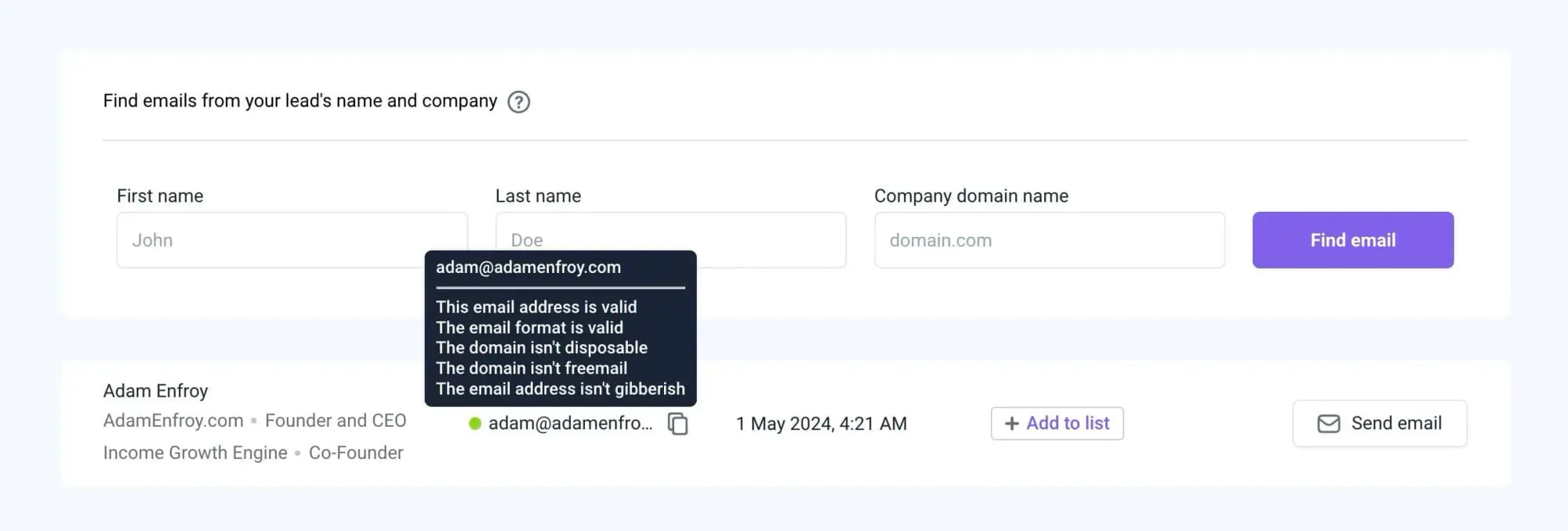
Domain Search
This feature is alright. It brings up a list of emails, but doesn’t show you as much detail as Hunter.
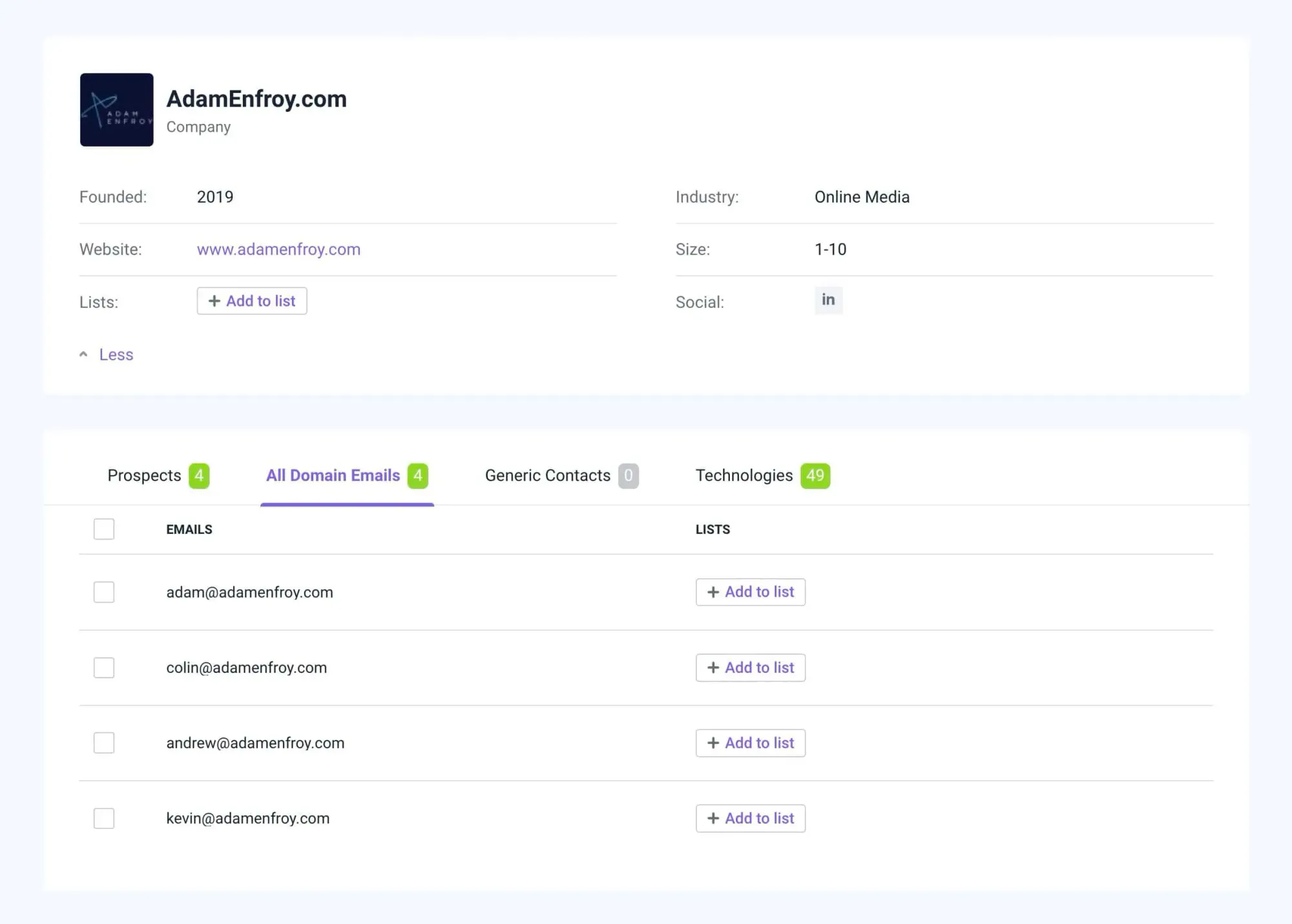
To see more about each email, you need to move them to the Prospects list, which feels a bit clunky.
Overall, it’s an okay backup tool. It finds emails alright, but the information it provides isn’t as reliable as some other tools I use.
That’s been my experience, at least.
19. Fonts Ninja
This is a free extension I find myself using quite a bit when I want to figure out which fonts a website is using.
Not only does it tell you the name of the font, but it also gives you useful details like font size, line height, letter spacing, and even the color.

Plus, you can set up a free account to bookmark any fonts that catch your eye, making it easy to reference them later.
20. Glimpse
Glimpse is an extension that takes Google Trends to the next level. It retains all the classic features of Google Trends and adds a bunch of cool stuff on top.
When you search for a keyword under the Keyword Lookup tab, you’ll see the standard Google Trends graph along with monthly search volumes.
Hover over the graph, and you can see the volume for that specific month.
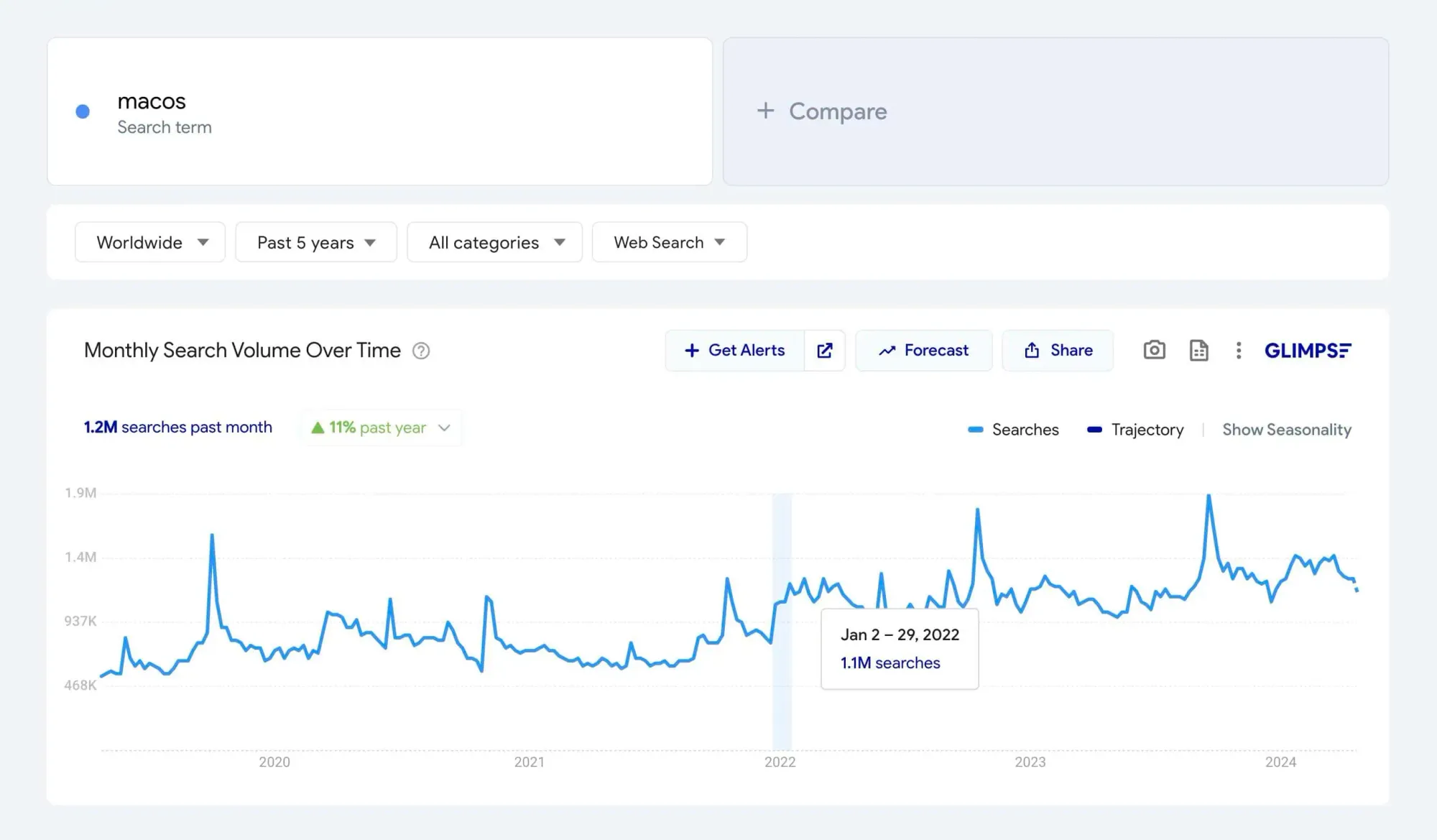
Here’s what the graph looks like without Glimpse for comparison:
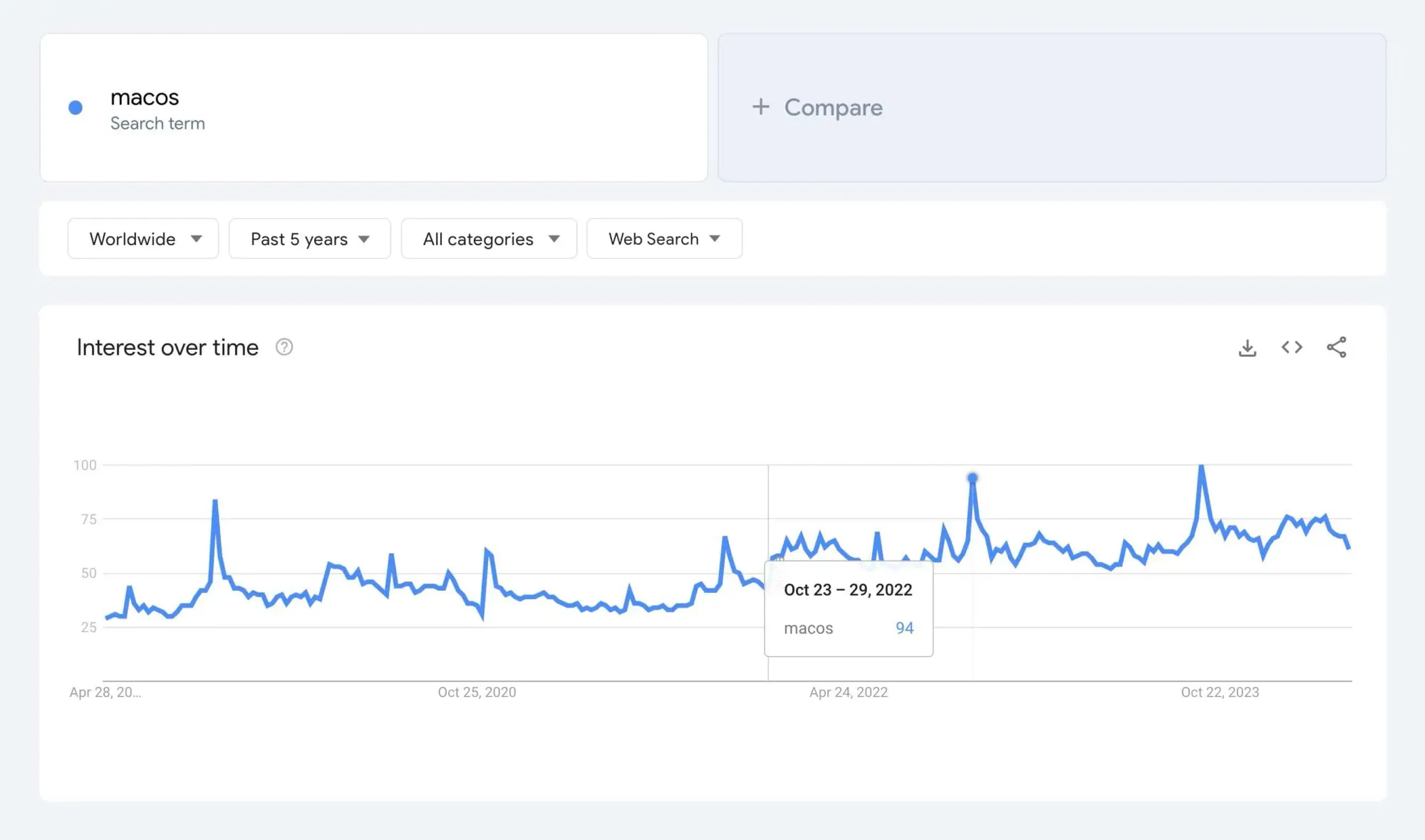
As you scroll down, there’s a section where Glimpse displays all the keywords and phrases that people also search for:

You can easily export all these phrases to a spreadsheet and organize them as you like.
Further down, there’s a topic map that shows all the topics related to your searched keyword.

This is really helpful when you’re looking to expand into related niches and need ideas on what to write about.
Under the Discover Trends tab, you can choose a broad topic and uncover new trends around it:

However, this feature might not be as useful if you’re on a tight budget.
If you’re using the free plan, some of the data are redacted — I’m guessing the more valuable insights. On the Pro plan, you’re limited to viewing only the first page of data.
To get full access to all the trends, you’d need to subscribe to the Expert plan, which costs $199/mo.
Both Glimpse and Exploding Topics are great for discovering new trends, though they approach it a bit differently.
21. GMass
GMass is an awesome tool that streamlines your email outreach campaigns directly within Gmail.
One of the standout features is how it connects to Google Sheets to pull merge fields from your templates. This lets you personalize each email, making your cold emails feel a bit warmer.
For instance, let's say I have a Google Sheet with 5 email recipients, each with unique subject lines and tailored email content.

To kick off the emails, I just pop open Gmail and click the GMass icon:

Then I choose to add recipients from a Google Sheet:

After selecting the correct sheet, I hit Connect to Spreadsheet:

And boom — GMass fills the To fields with my recipients:
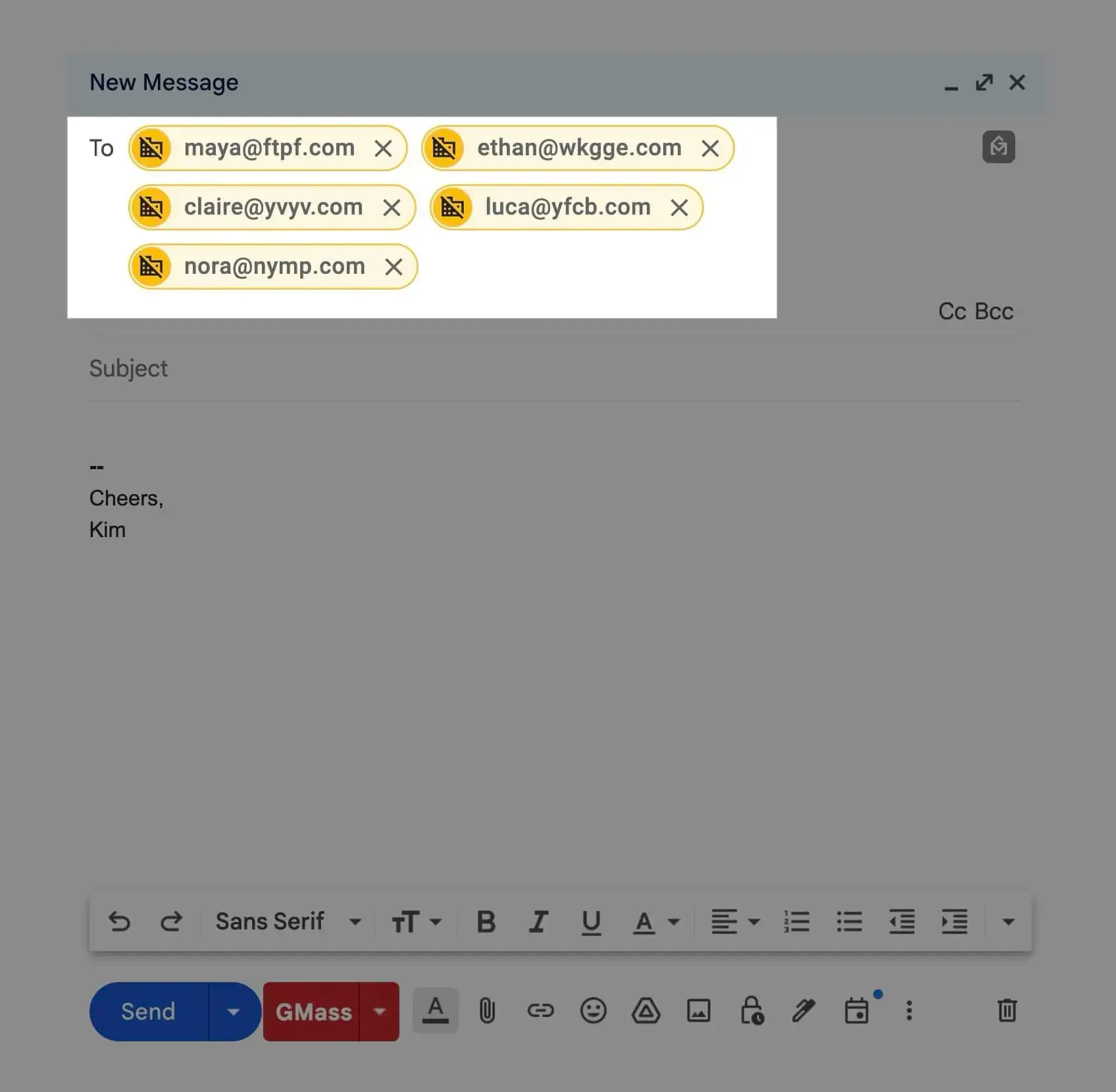
Next up, I craft my emails using placeholders for the merge fields listed in the spreadsheet:
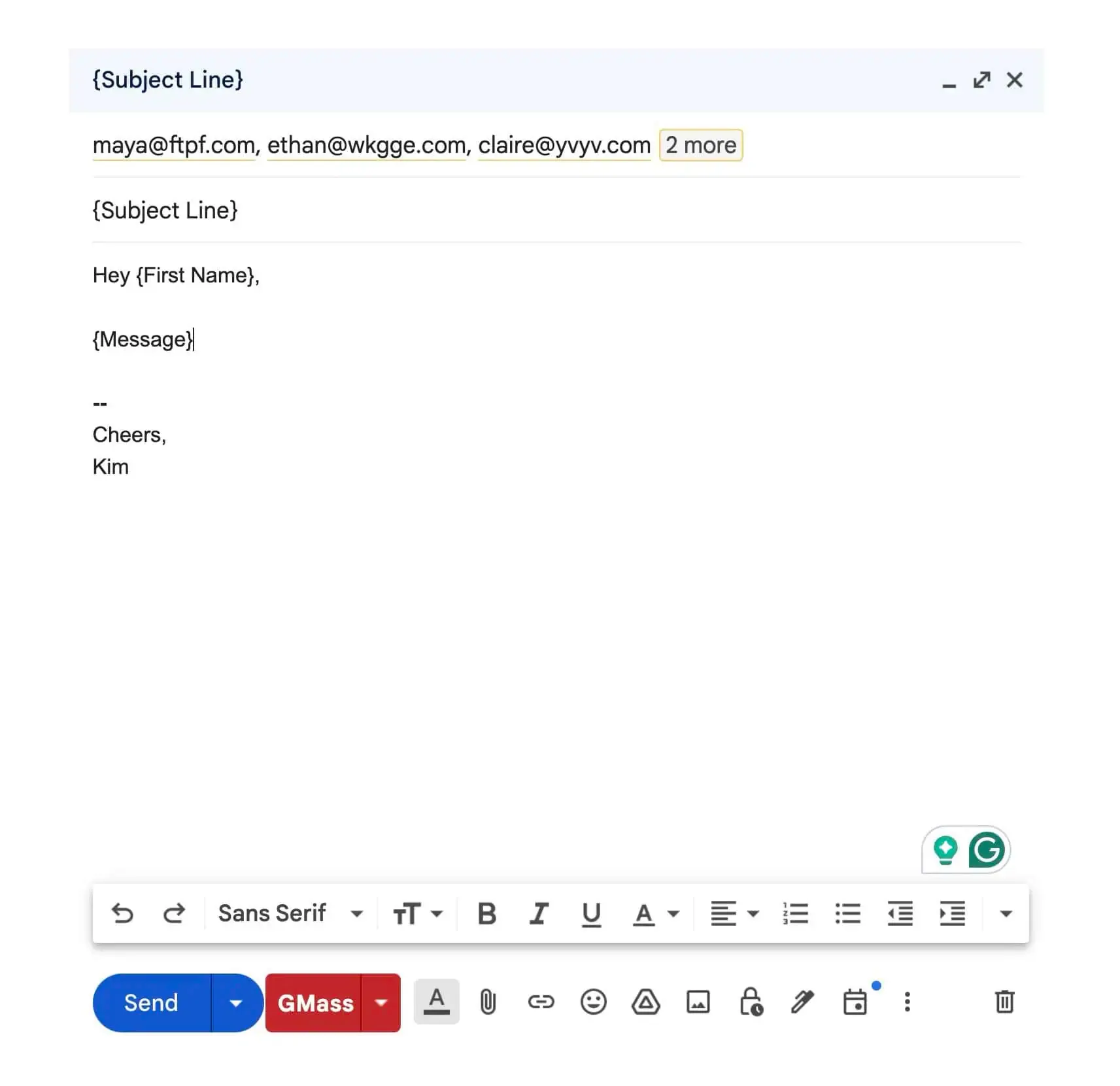
Check out what got sent to the first recipient:
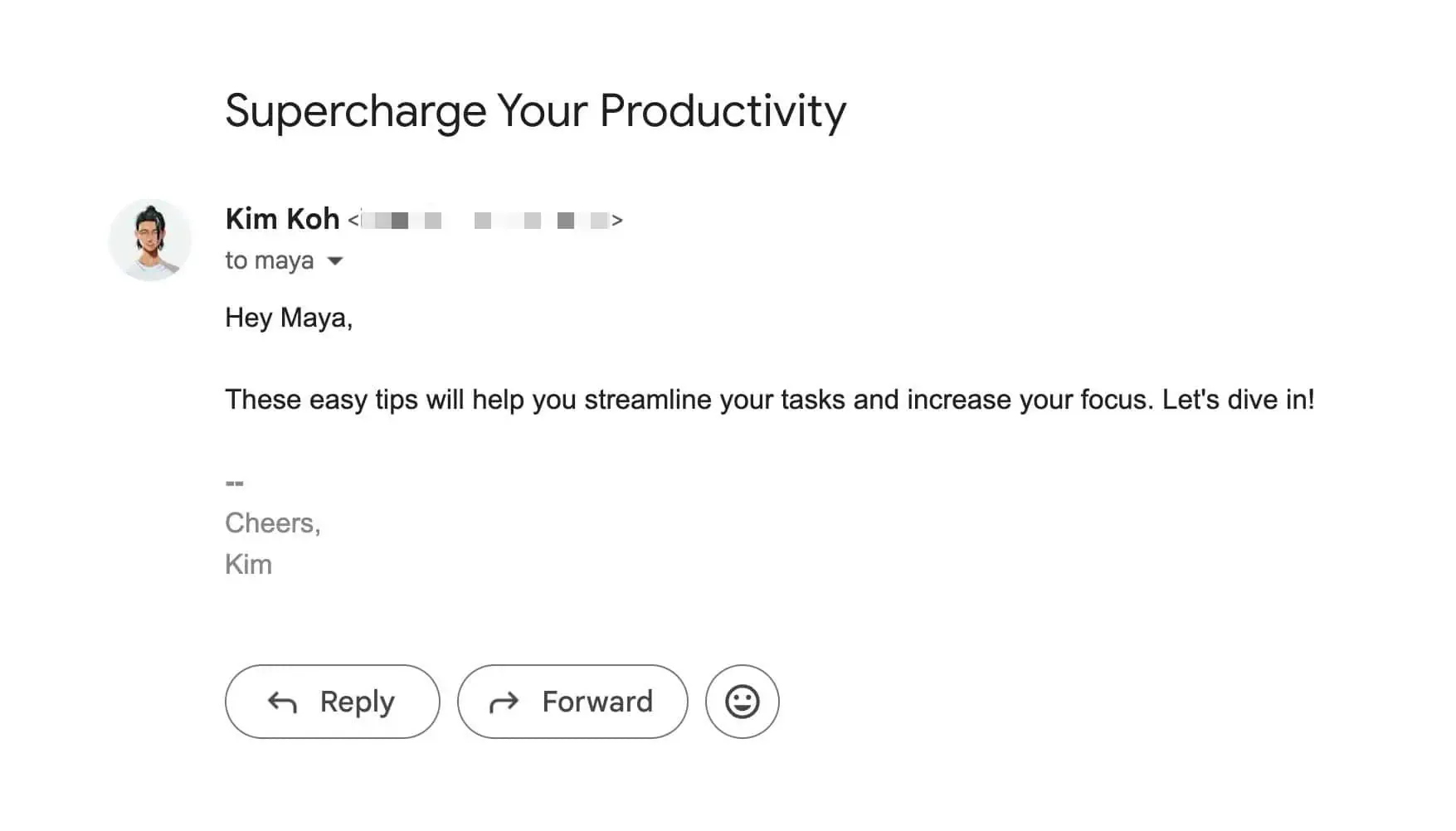
And here’s the customized version for the second:
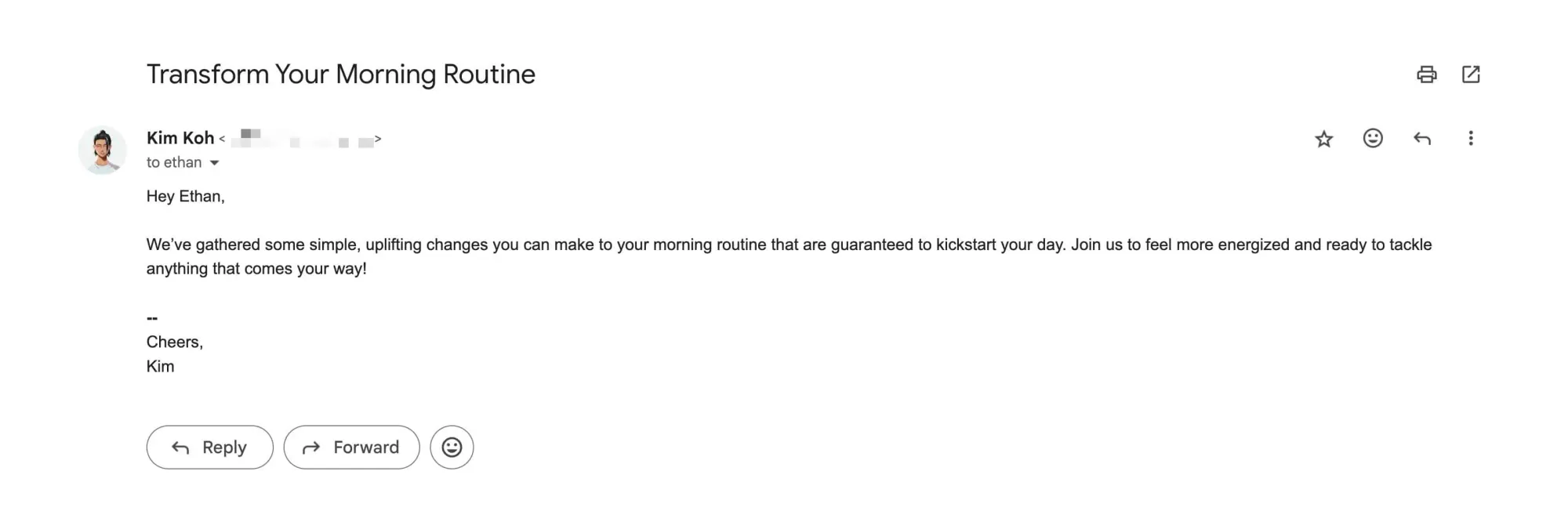
Pretty slick, huh?
GMass packs even more features, but since I mainly use it for cold email outreach, I'll let you discover other features yourself.
22. Keywords Everywhere
If Ahrefs’s pricing or credit system doesn’t quite work for you, Keywords Everywhere is a great alternative for keyword research.
It’s no longer a freemium tool — it now requires a monthly subscription, but it remains much more affordable than Ahrefs, especially with Ahrefs's recent price changes.
In many ways, Keywords Everywhere functions similarly to Ahrefs, though I personally find Ahrefs to have a more intuitive user interface and possibly more accurate data.
When you search for a keyword, Keywords Everywhere displays keyword metrics right under the search bar and domain metrics under each search result.
It even shows trend data for the keyword on the sidebar:

It’s also versatile, working on social platforms like YouTube:
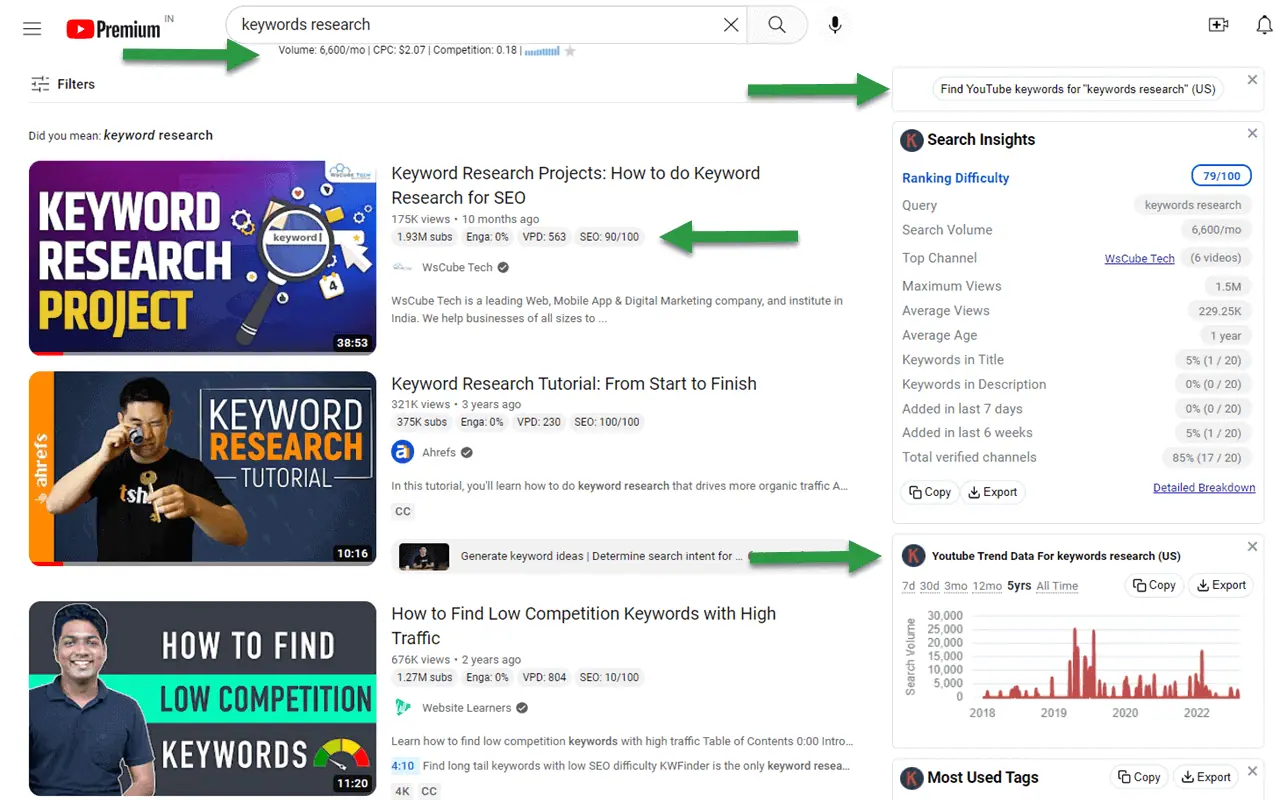
All in all, if you’re not already hooked on Ahrefs and just need a reliable keyword tool to brainstorm content ideas, Keywords Everywhere should serve you well.
23. Tag Assistant Companion
If you're using Google Tag Manager (GTM) or Google Analytics (GA) for conversion tracking, this extension is a fantastic tool for making debugging easier.
You can click on the extension at any time to quickly enter debug mode and see which of your GTM tags have fired or not — all without having to log into the GTM dashboard.
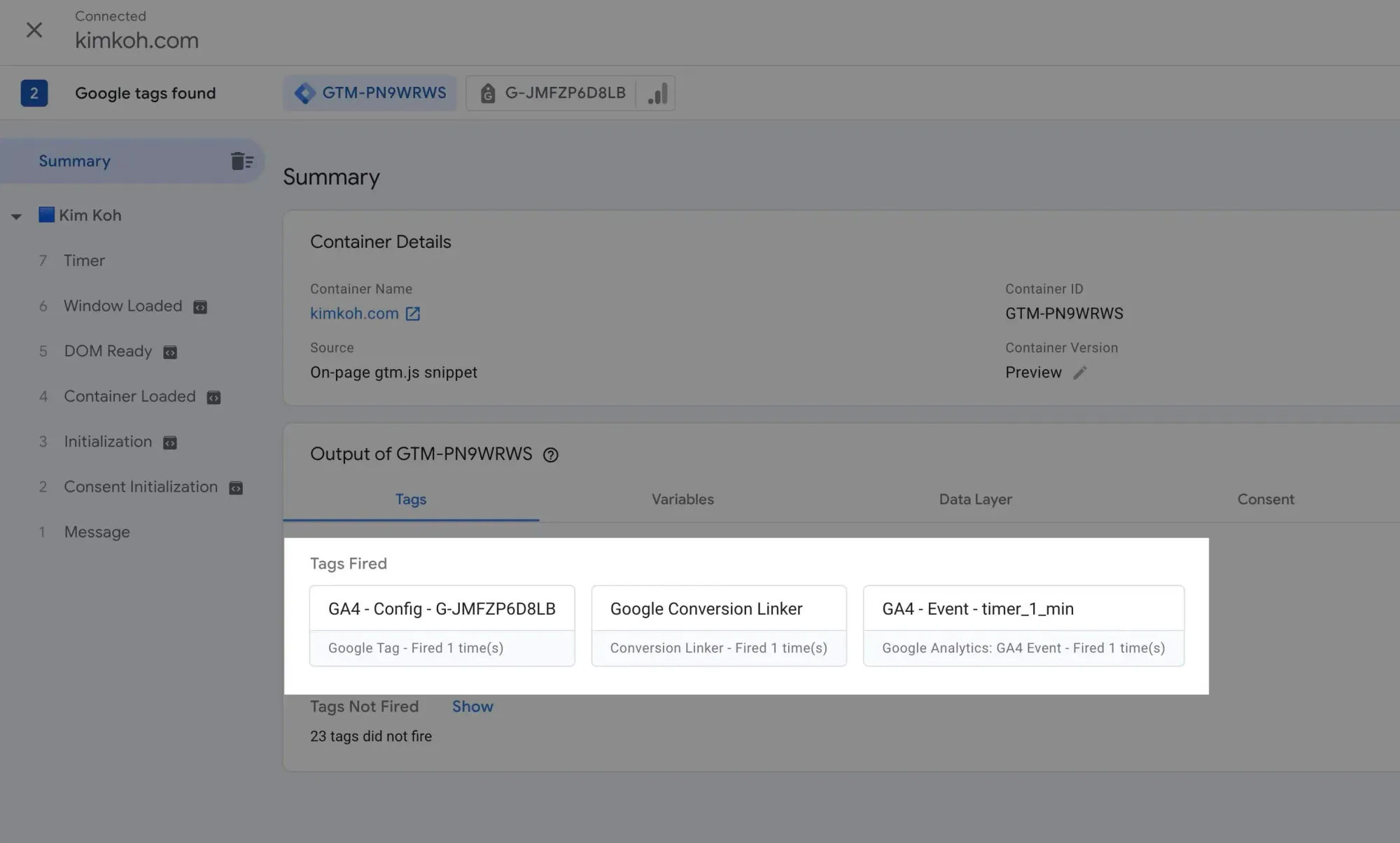
Just make sure you're logged into Google and have previously entered debug mode.
It's also interesting to see which Google tags are installed on other people’s sites and what kind of events they're pushing to their dataLayer:
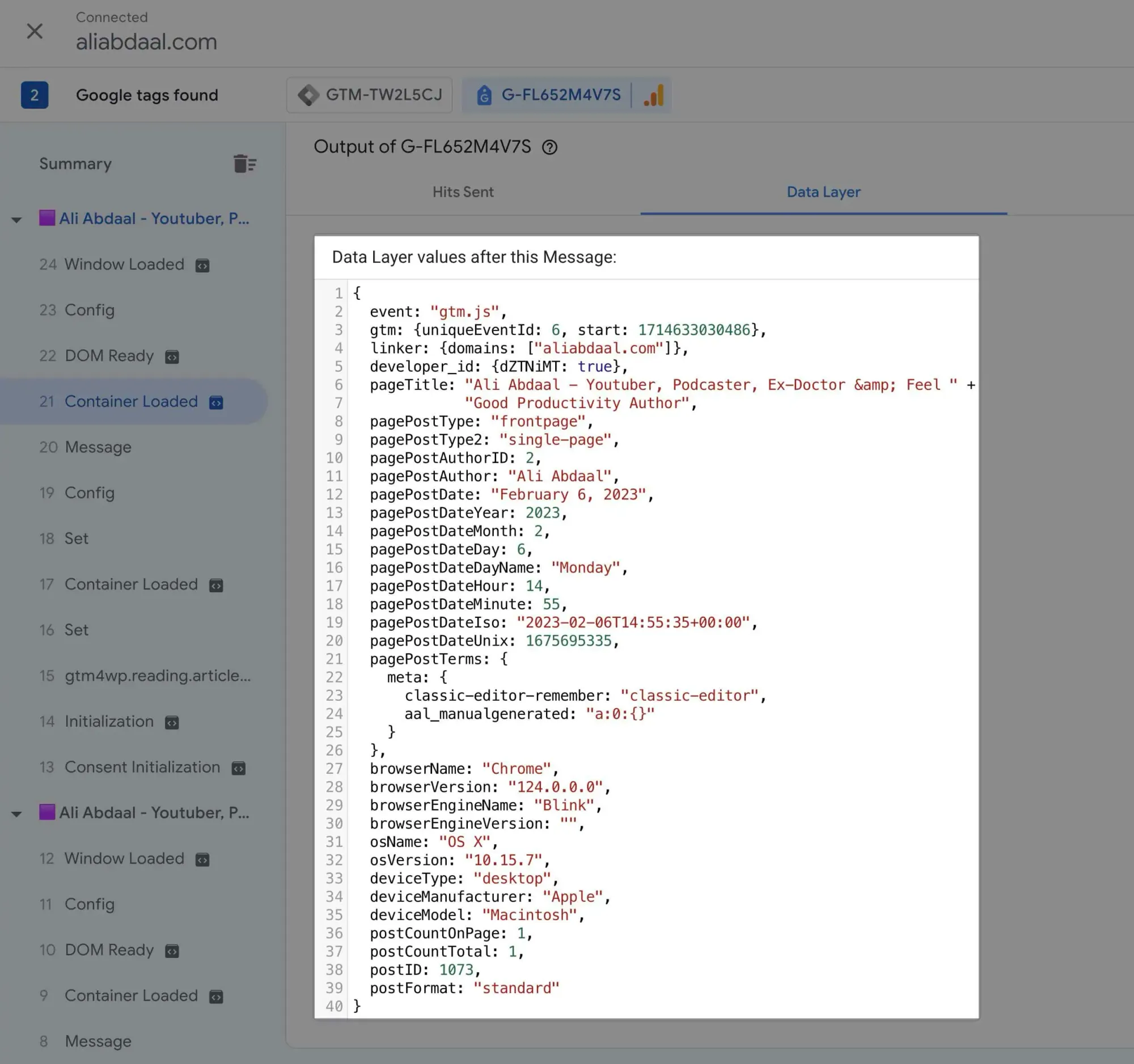
I really enjoy using this extension, and if you use GTM at all, you should definitely have it installed.
24. Tag Explorer
Tag Explorer is an extension that shows you all the tags and pixels detected on a website.
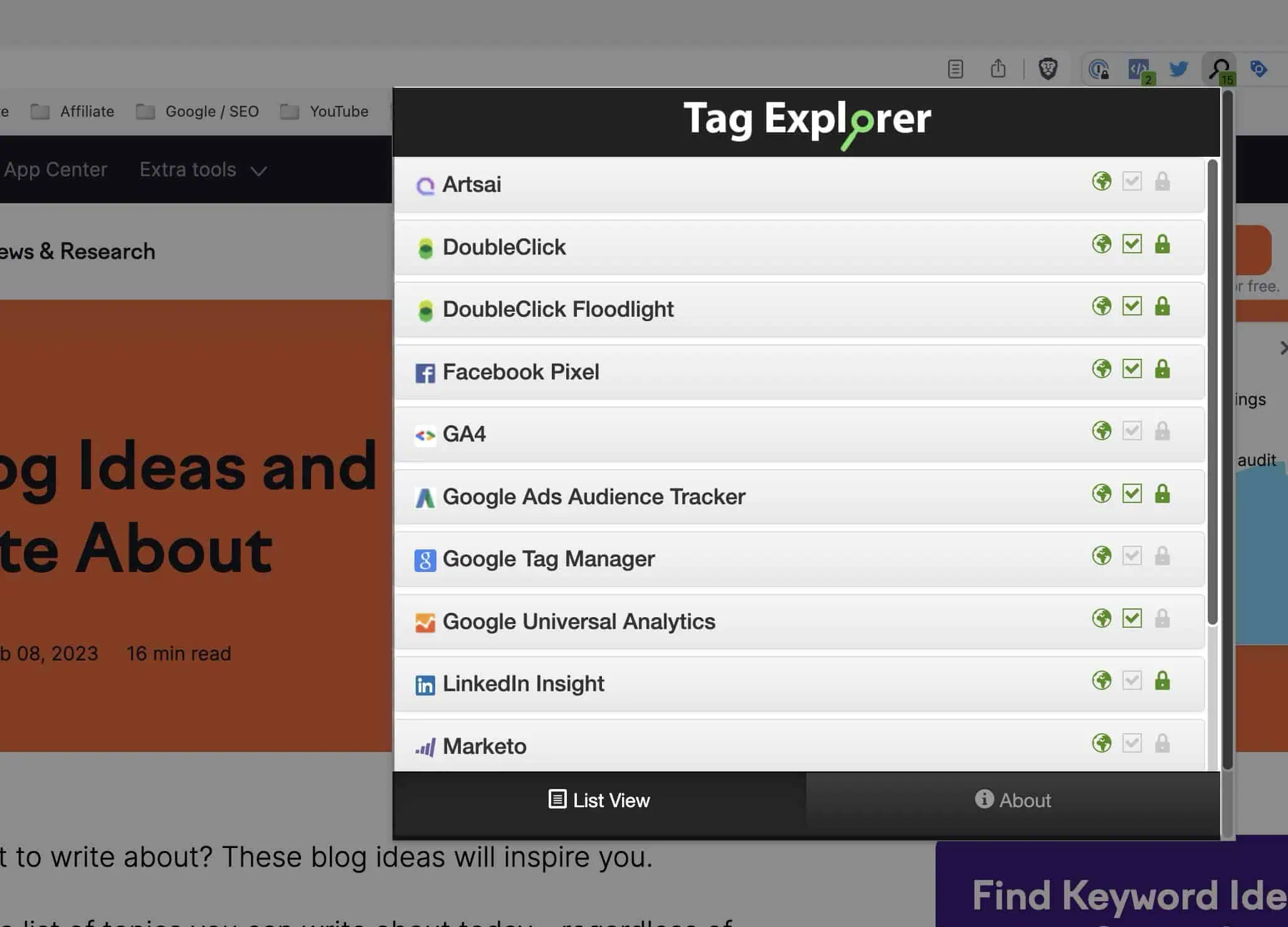
I’ll say, though, the interface is less intuitive than I’d like and the detection a bit wonky sometimes, so I don’t use it that often.
It’s still a convenient tool to see all the marketing tags of a website in one place, but to diagnose website events, I prefer using the dedicated extensions for different platforms.
Here are the links to those individual extensions if you’re interested:
- Meta Pixel Helper
- Pinterest Tag Helper
- Pixel Helper for LinkedIn
- TikTok Pixel Helper
- Twitter Pixel Helper
25. Similarweb
Similarweb is my #1 choice for gauging the estimated traffic a website receives.
They've now implemented a weekly usage limit for free accounts, but the value you get from this extension is still phenomenal.
It displays the estimated traffic of the website:

It also shows the top keywords that drive search traffic:
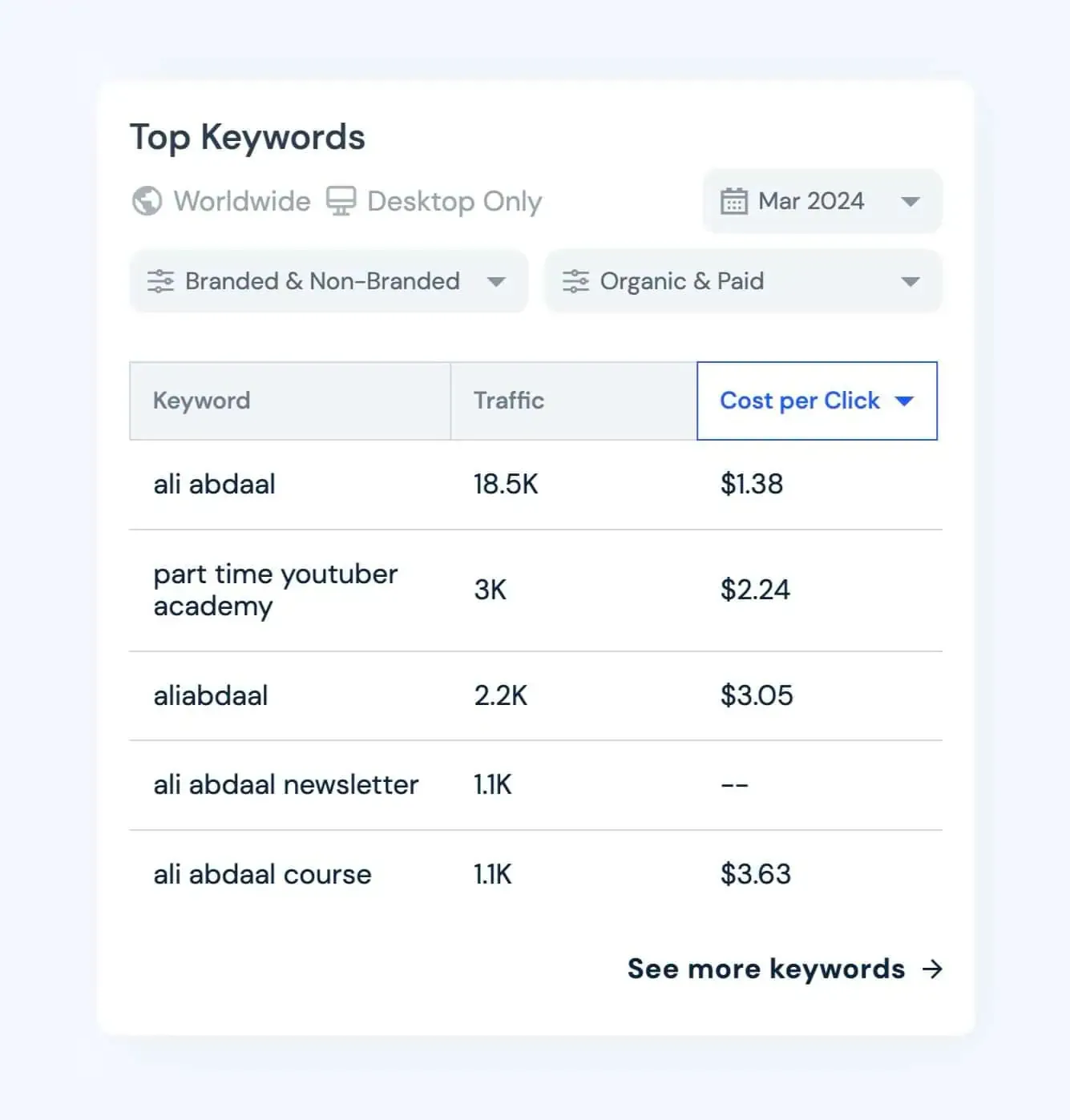
You can see the geographical data for the traffic:
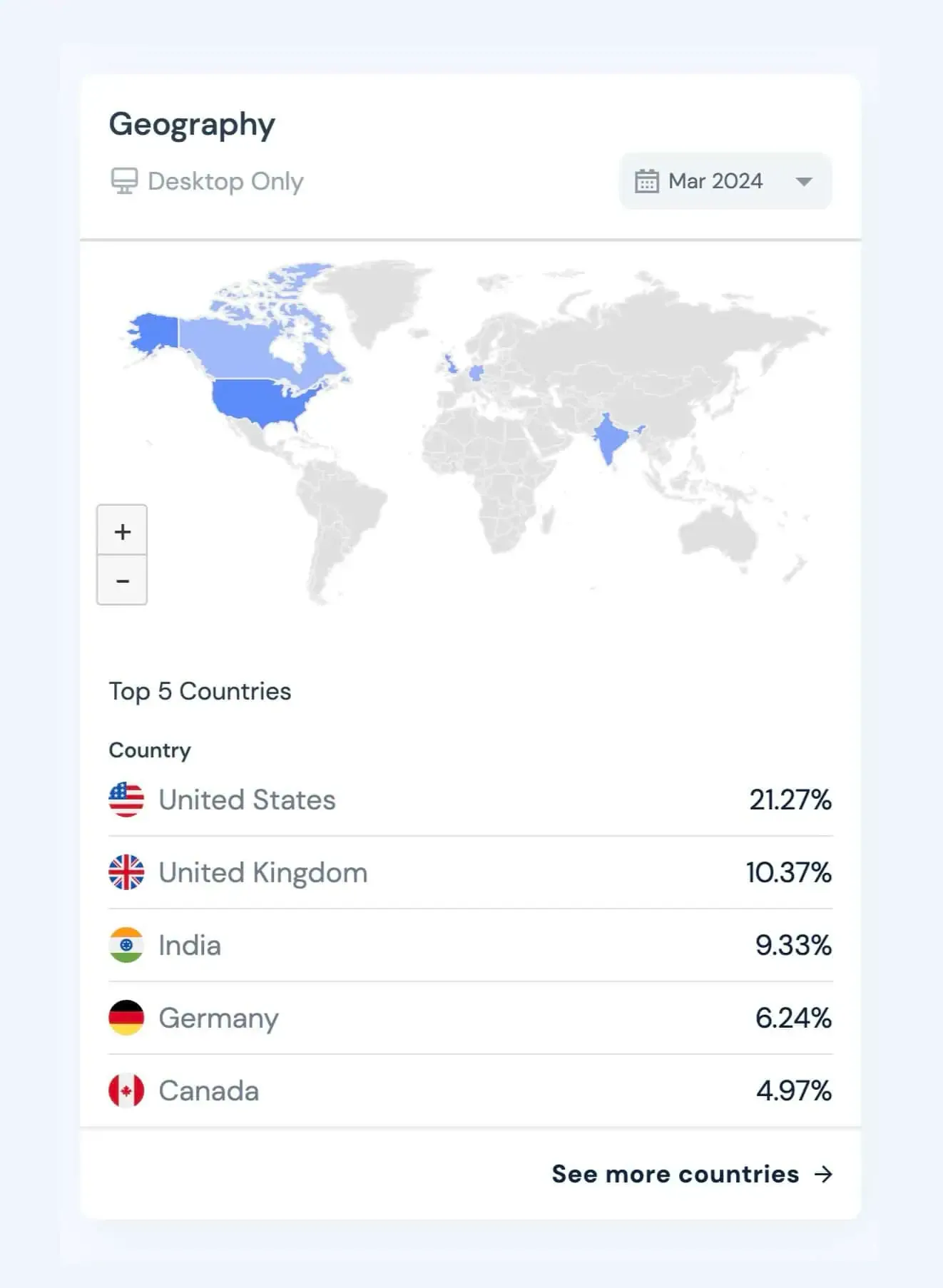
And the traffic sources that contribute to the website’s visits:
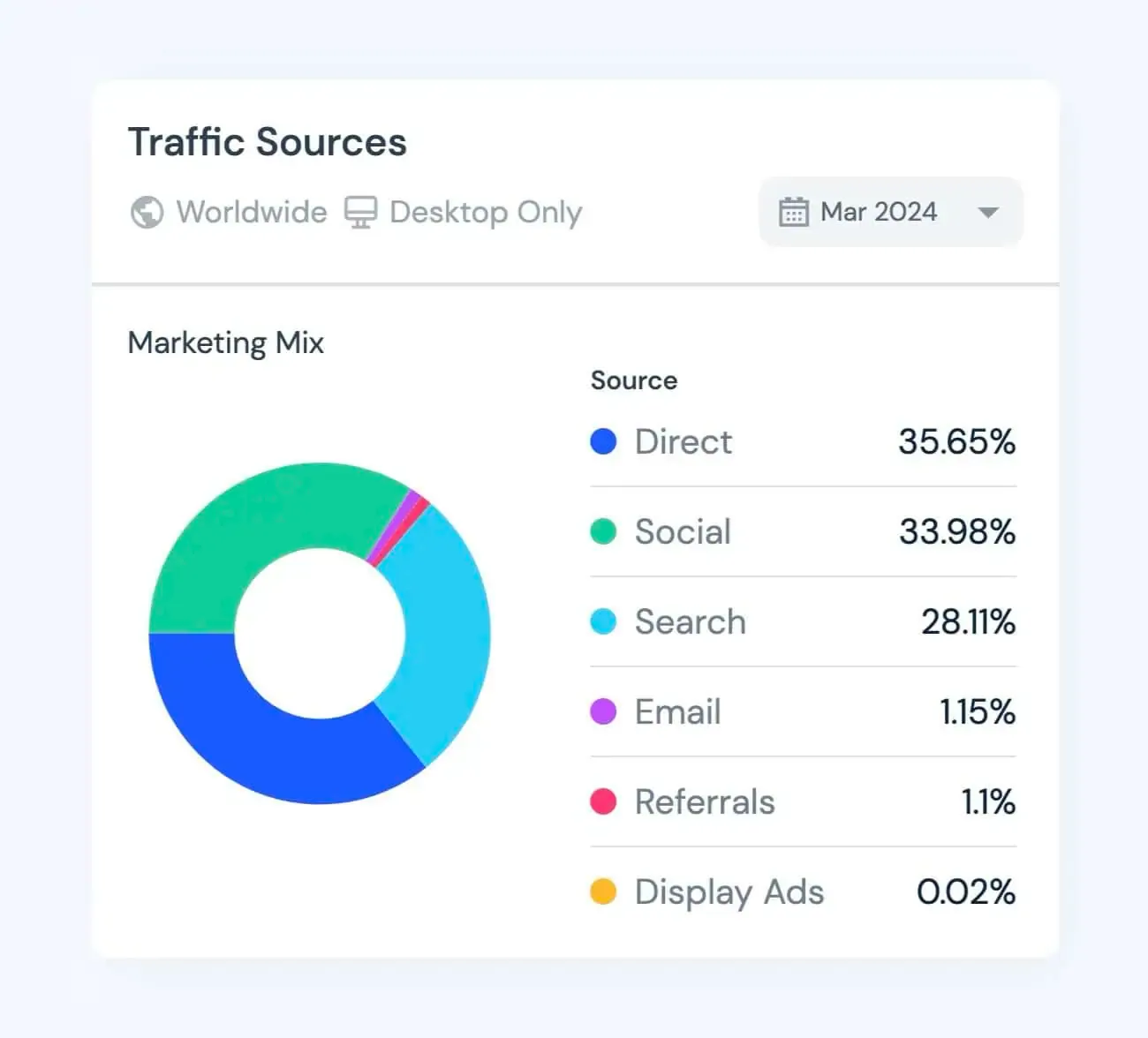
Like with any traffic estimation tool, take the data with a grain of salt. Note that most of the data, especially on the free plan, is limited to desktop traffic only.
26. Wappalyzer
Wappalyzer is a nifty tool that detects the technologies used by websites.
I mainly use it to identify the Content Management System (CMS) a website is using. Occasionally, I also use it to discover interesting tech tools employed by superbly built websites.
For WordPress sites, it can sometimes even reveal the hosting company, which is a really neat detail.
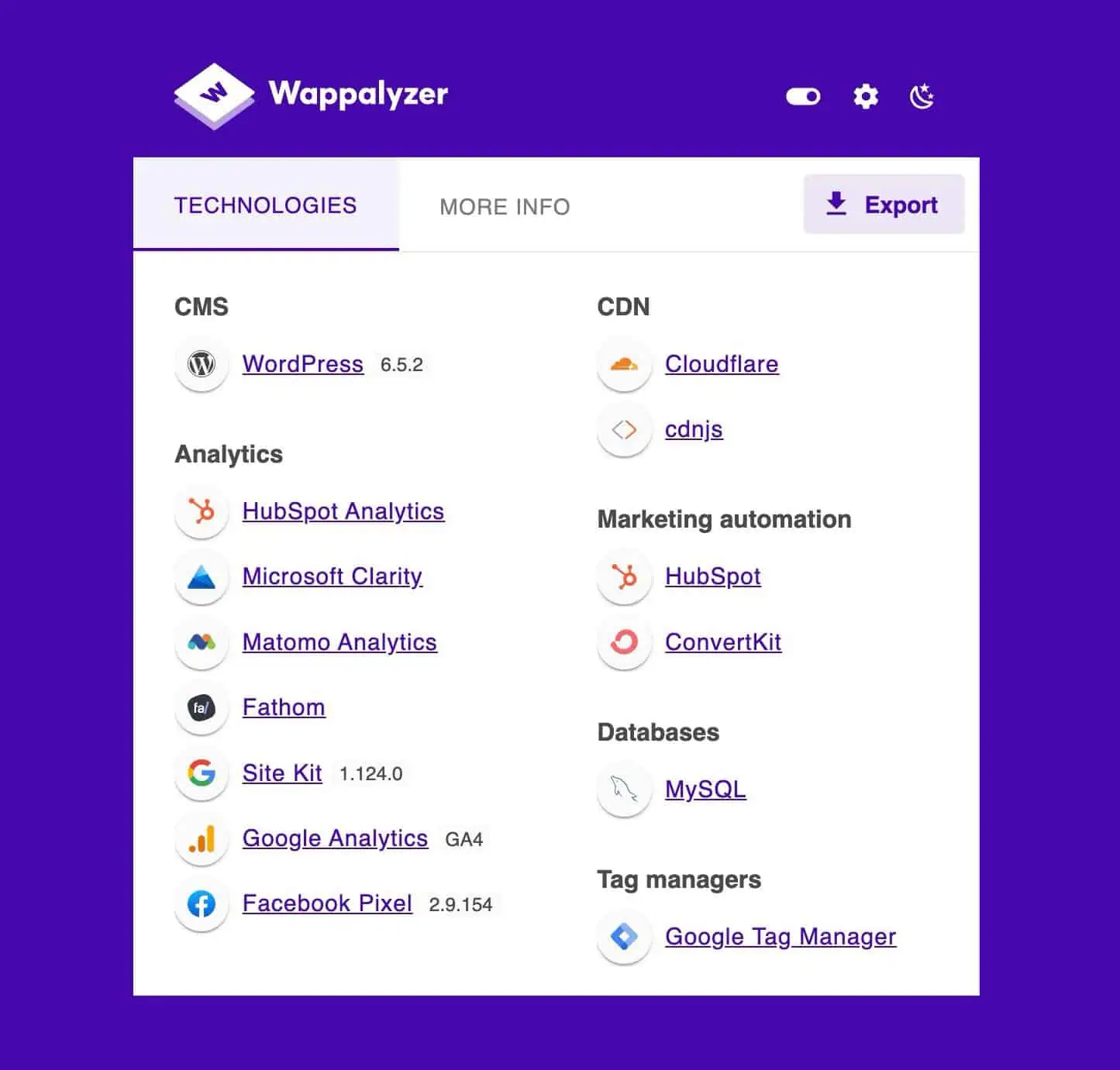
If you're into web design and development like I am, this extension is a must-have.
It's perfect for anyone who loves to geek out over the technical aspects of websites.
Best Chrome Extensions for YouTube
27. Downie
Downie is a versatile extension that lets you download video files from almost any website, except for DRM-protected content.
All you need to do is click the extension icon when you’re on a video page, and the download process will begin.
Alternatively, you can right-click on a video and select “Open link in Downie”:

Downie also offers more features in its app version, which is one of my favorite apps. I cover it more in-depth in another post about Mac apps.
However, Google isn’t a fan of what this extension does, so you can’t install it directly from the extension webstore.
But you can follow the official guide to install it.
28. Return YouTube Dislike
This extension does exactly what the name says — it returns the dislike count of YouTube videos.
Google might change something on the YouTube website, and the extension might stop working, but the developer typically fixes it within a few days.
Don’t let Google hide the ugly stuff from us 😎
29. vidIQ Vision for YouTube
This extension offers several features to enhance your YouTube experience, especially if you're a content creator.
However, there are three features I find particularly useful.
It used to display the subscriber count for each video right on the YouTube home feed, which I absolutely loved.
But lately, it only shows that data in the YouTube search results:

It also displays the SEO data for searched keywords on the sidebar, which can be useful for researching content ideas.
Another great feature is the ability to see the trending videos of a channel.
On a channel page, simply click the three dots next to the vidIQ icon and then click “View trending videos”:

This will display the channel's trending videos, sorted by views per hour (VPH):

Pretty cool, right?
Wrapping Up
And there you have it — 29 Chrome extensions that have stood the test of time in my personal use.
Now, it's your turn — Which of these extensions do you find the most useful or intriguing? Are there any you thought would be on this list but weren't?
I'd love to hear your thoughts, so please drop a comment below and let me know.

